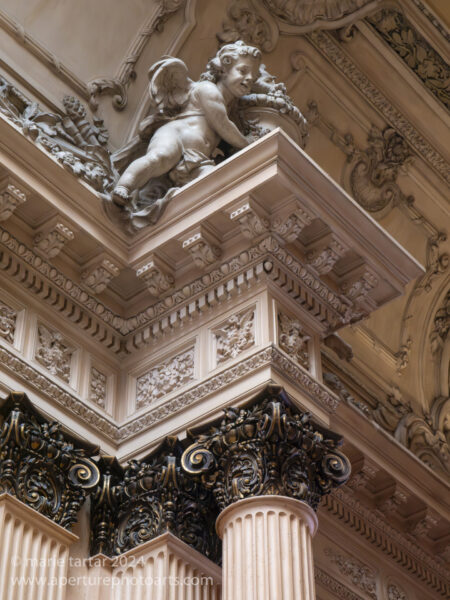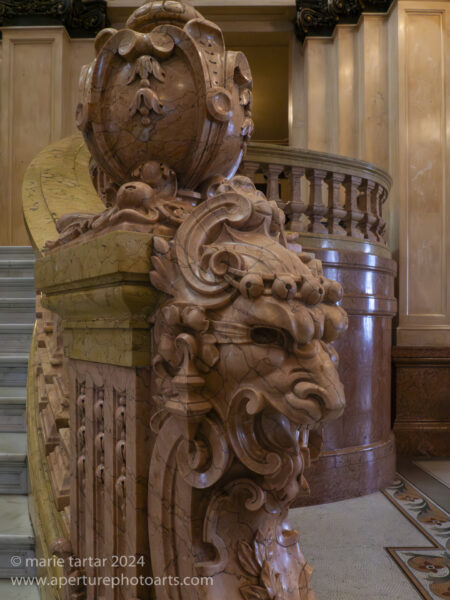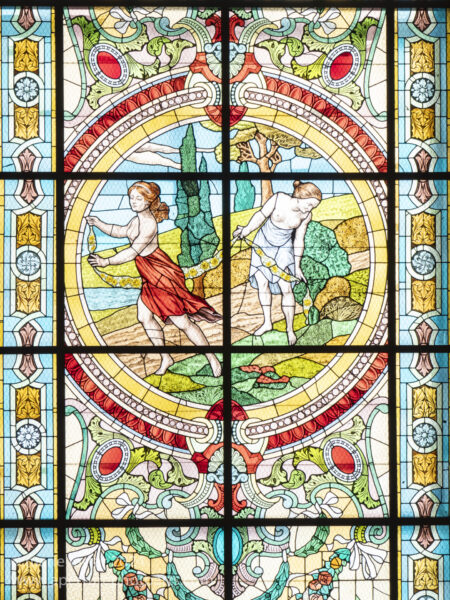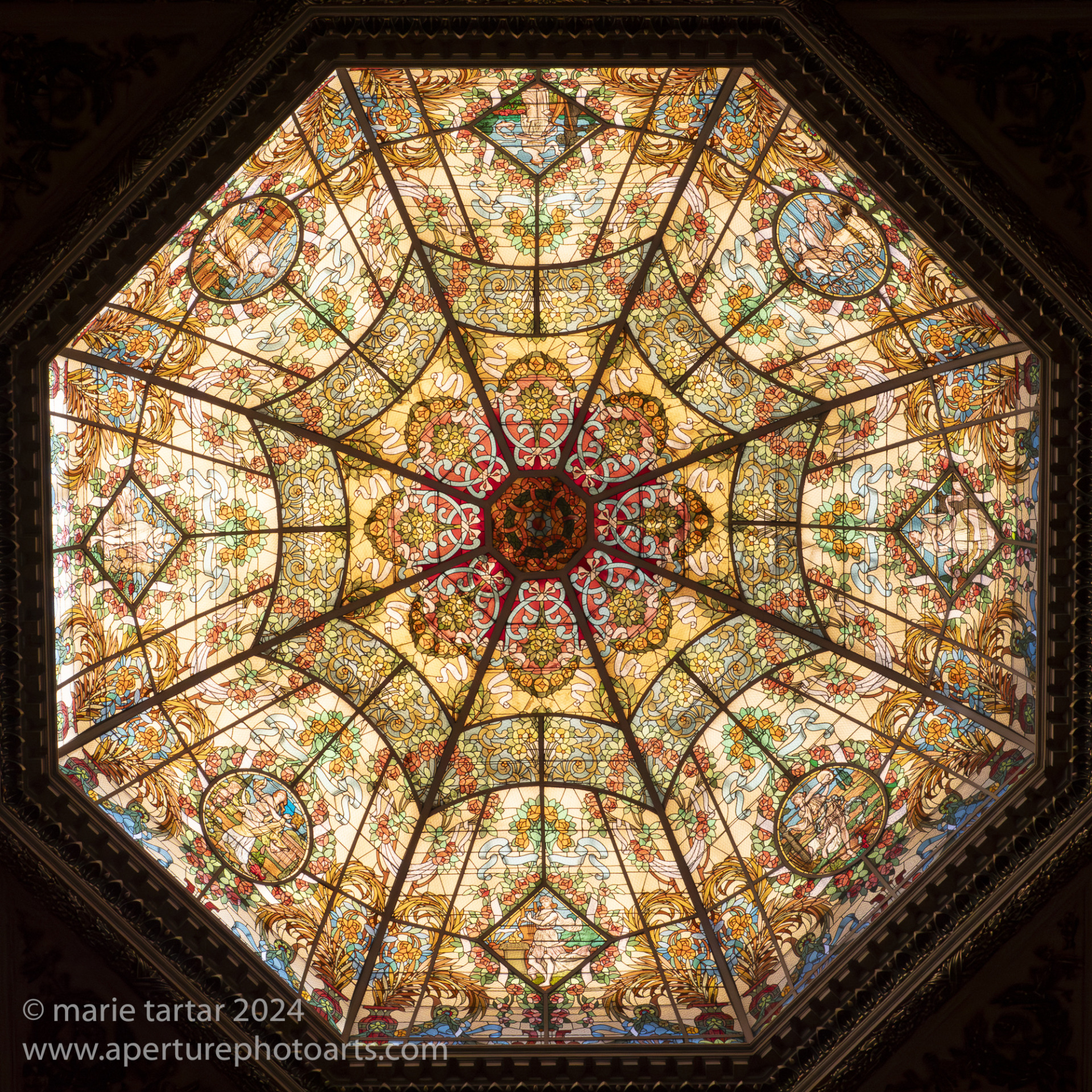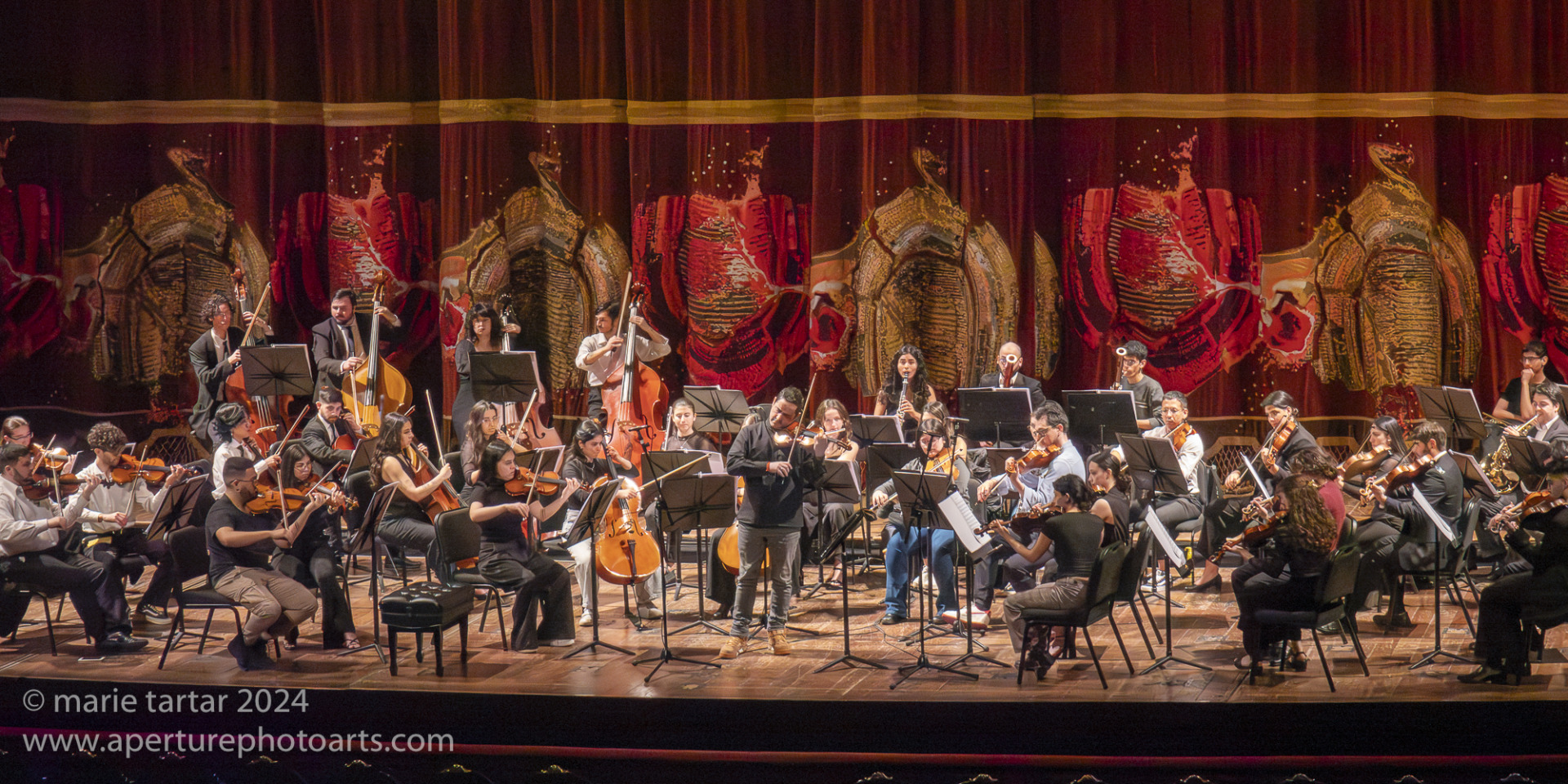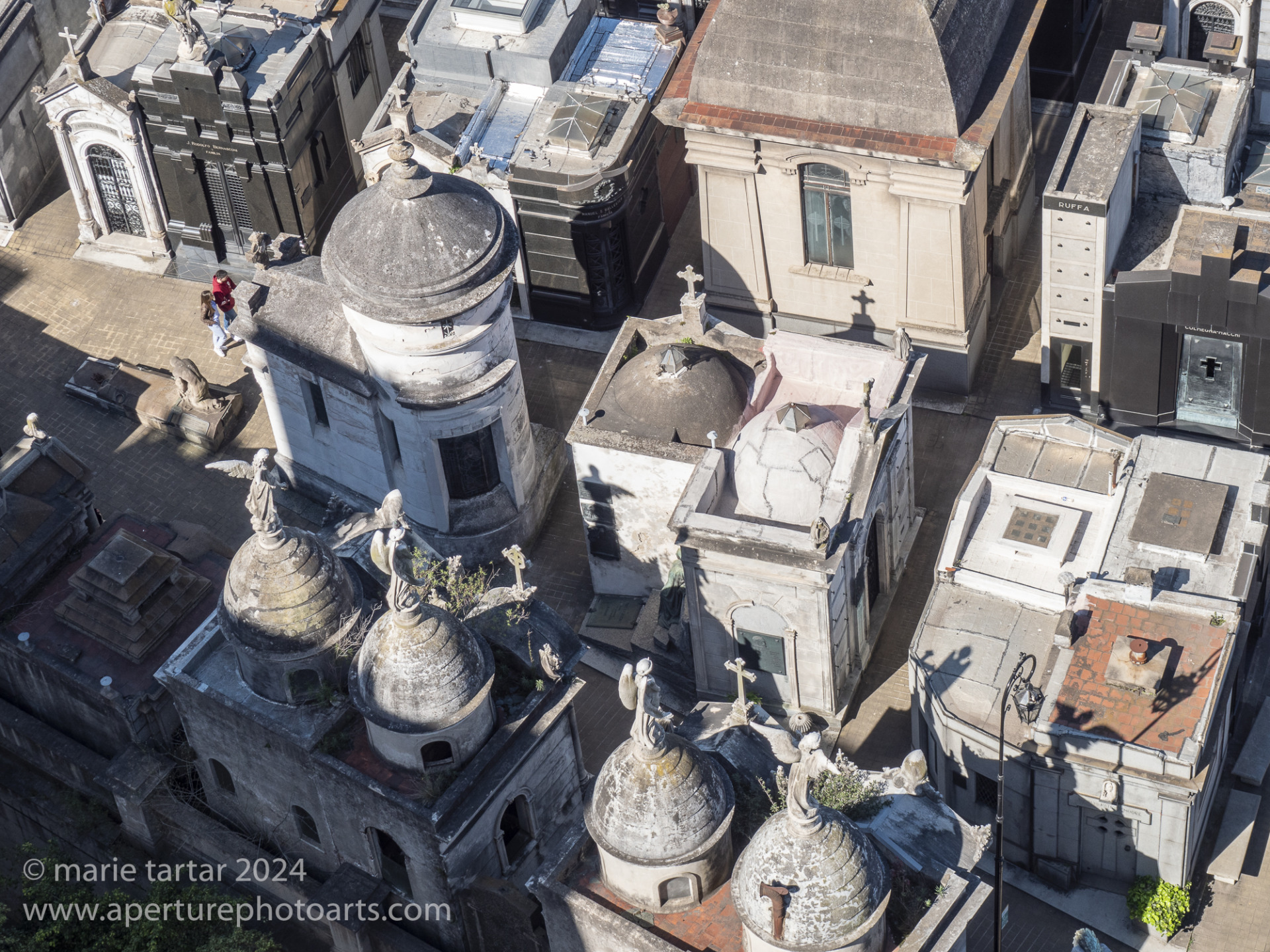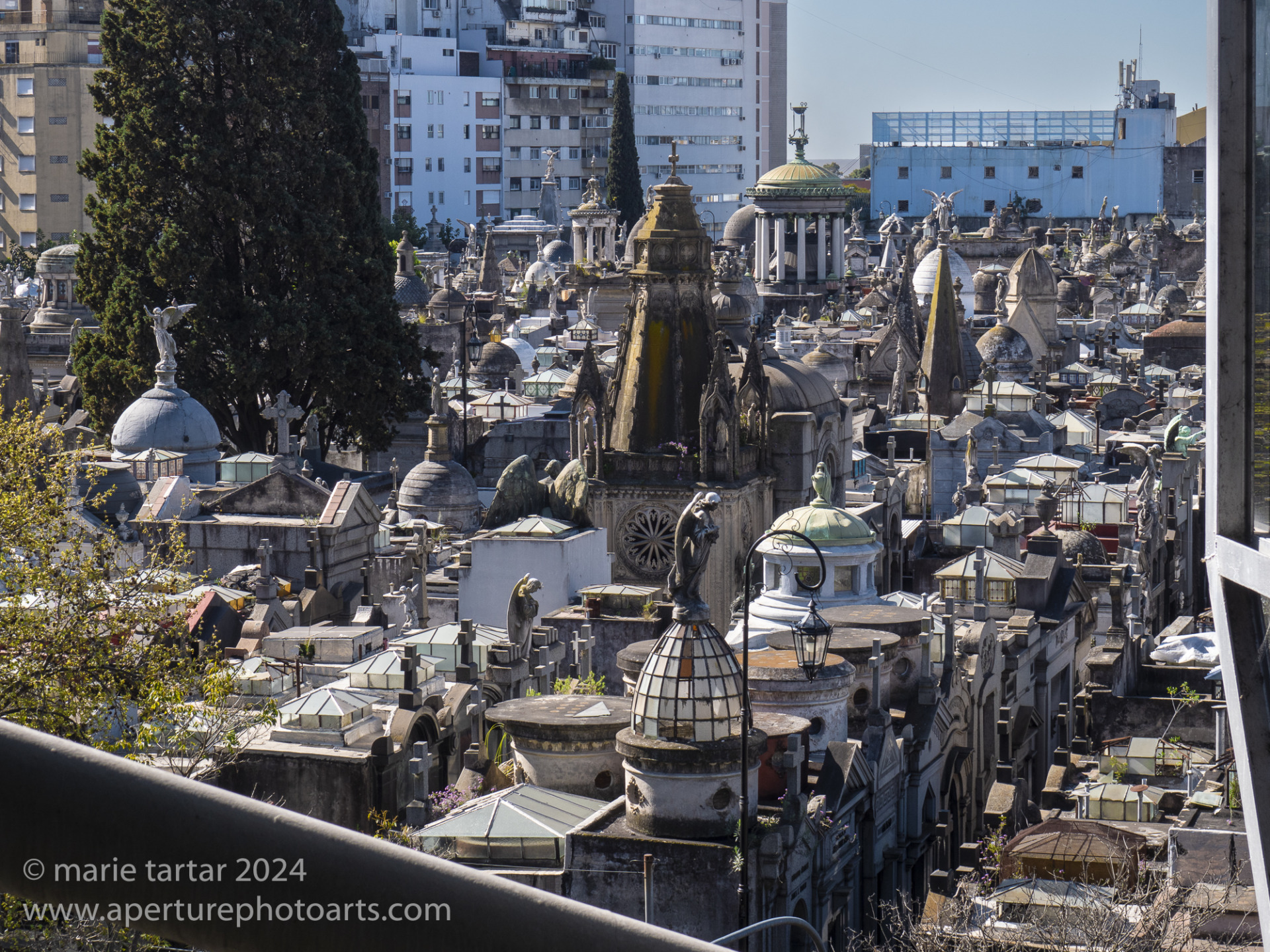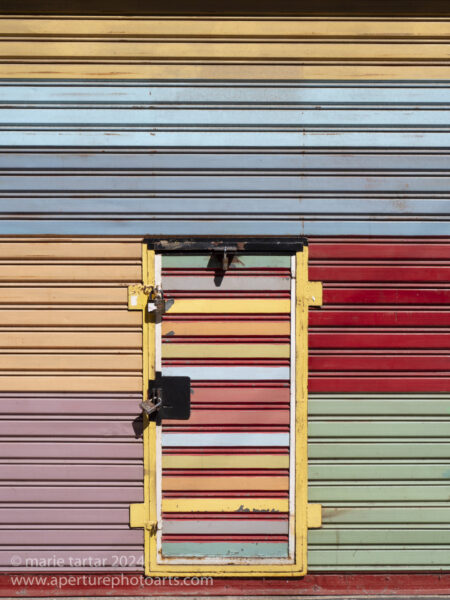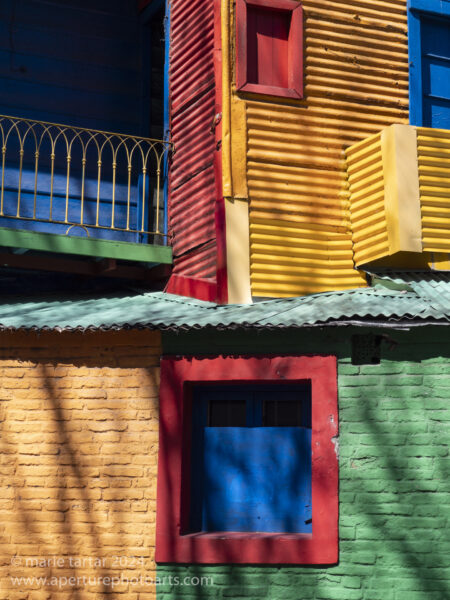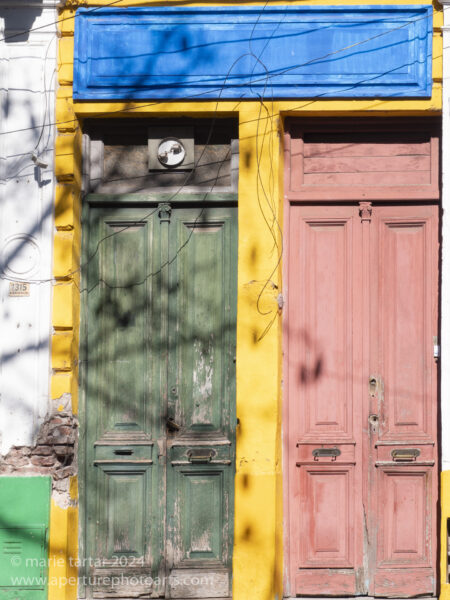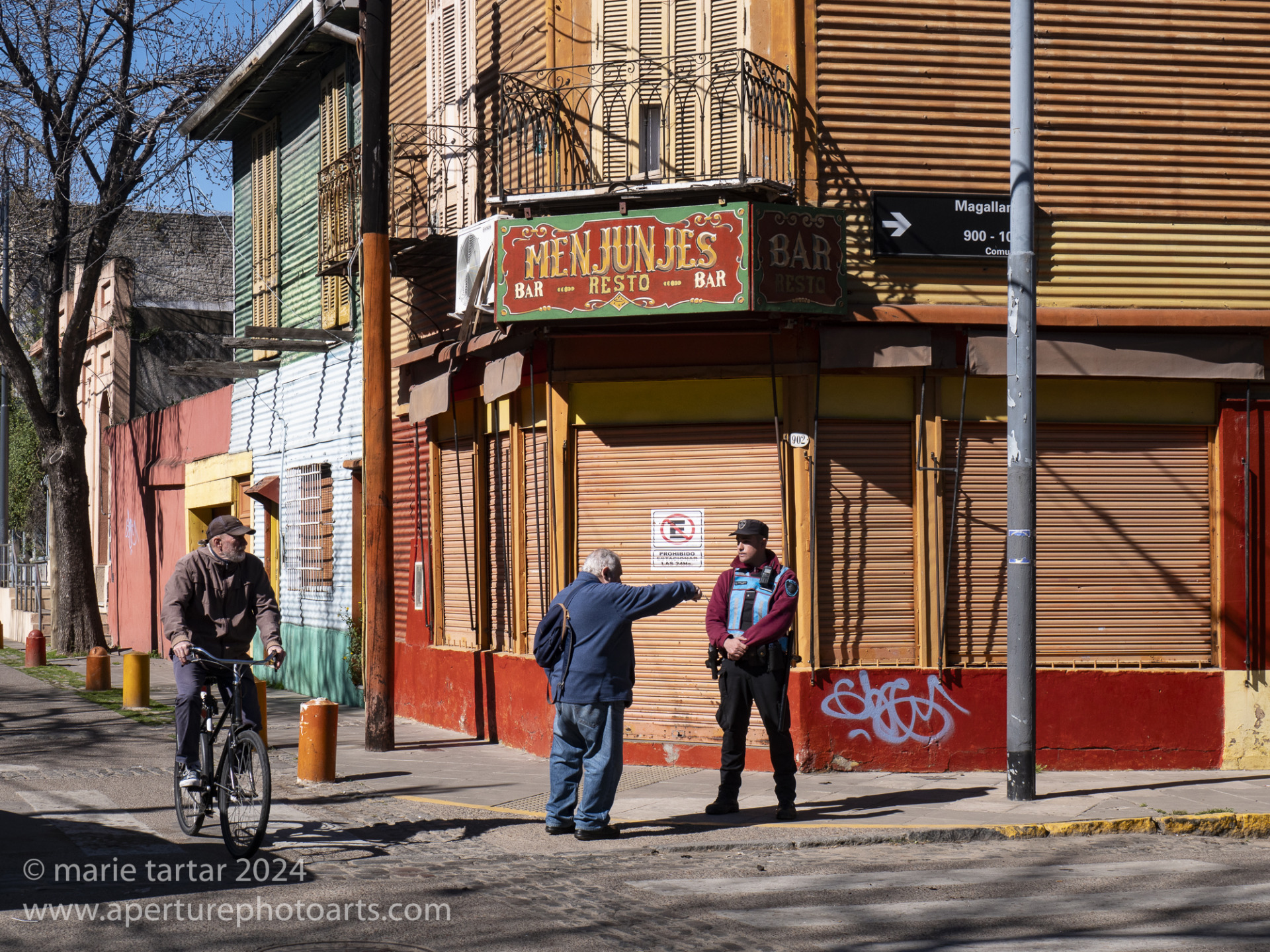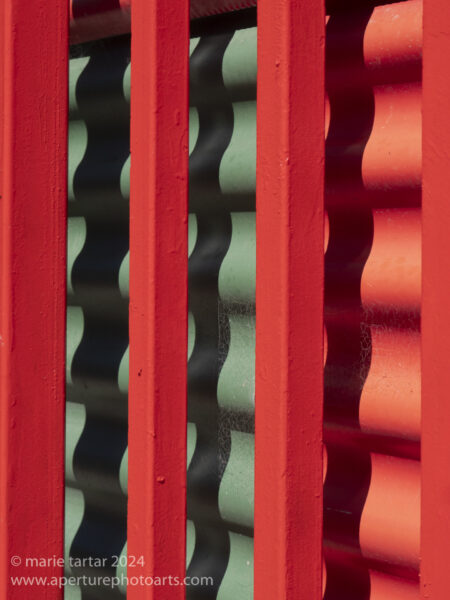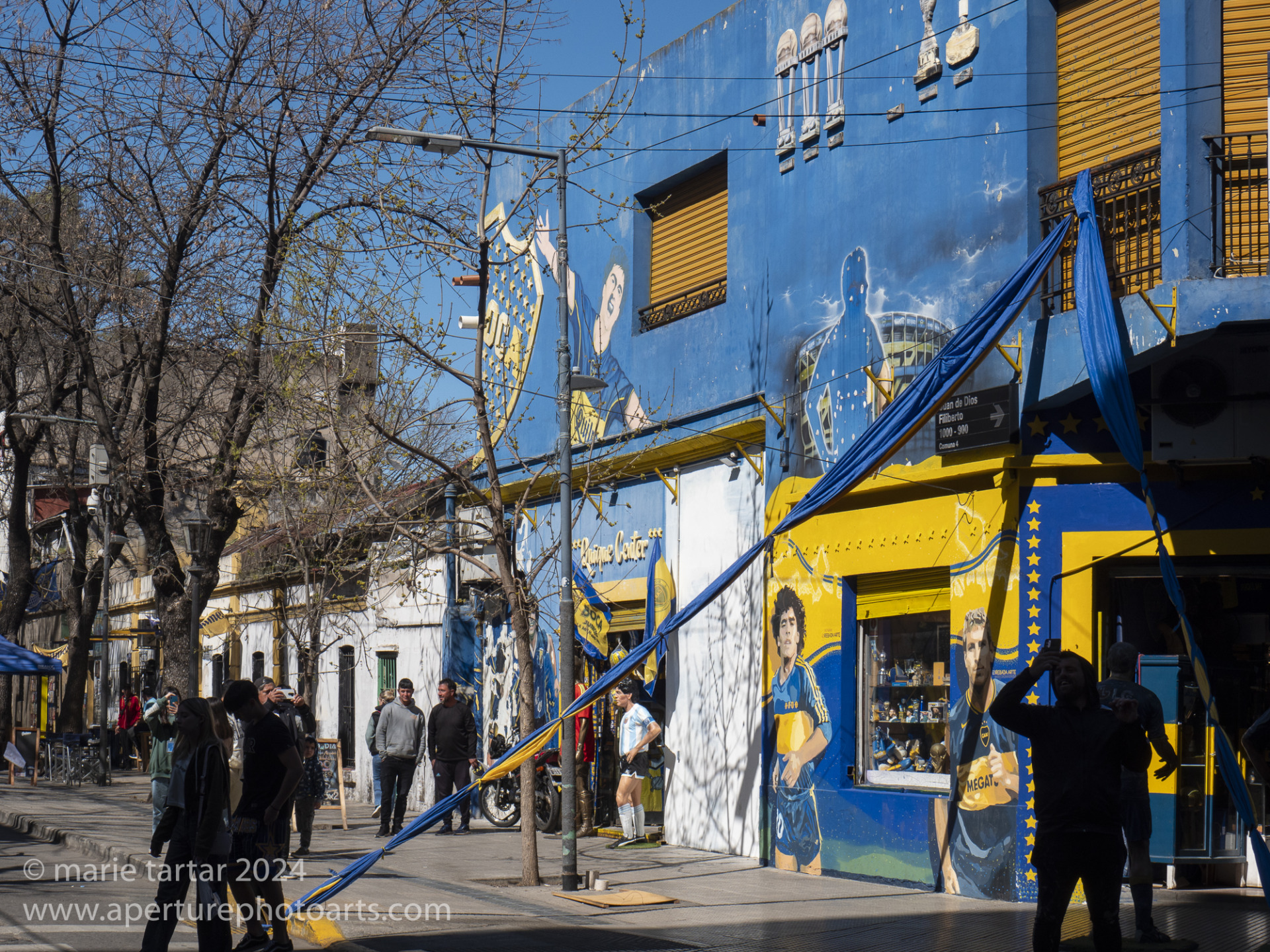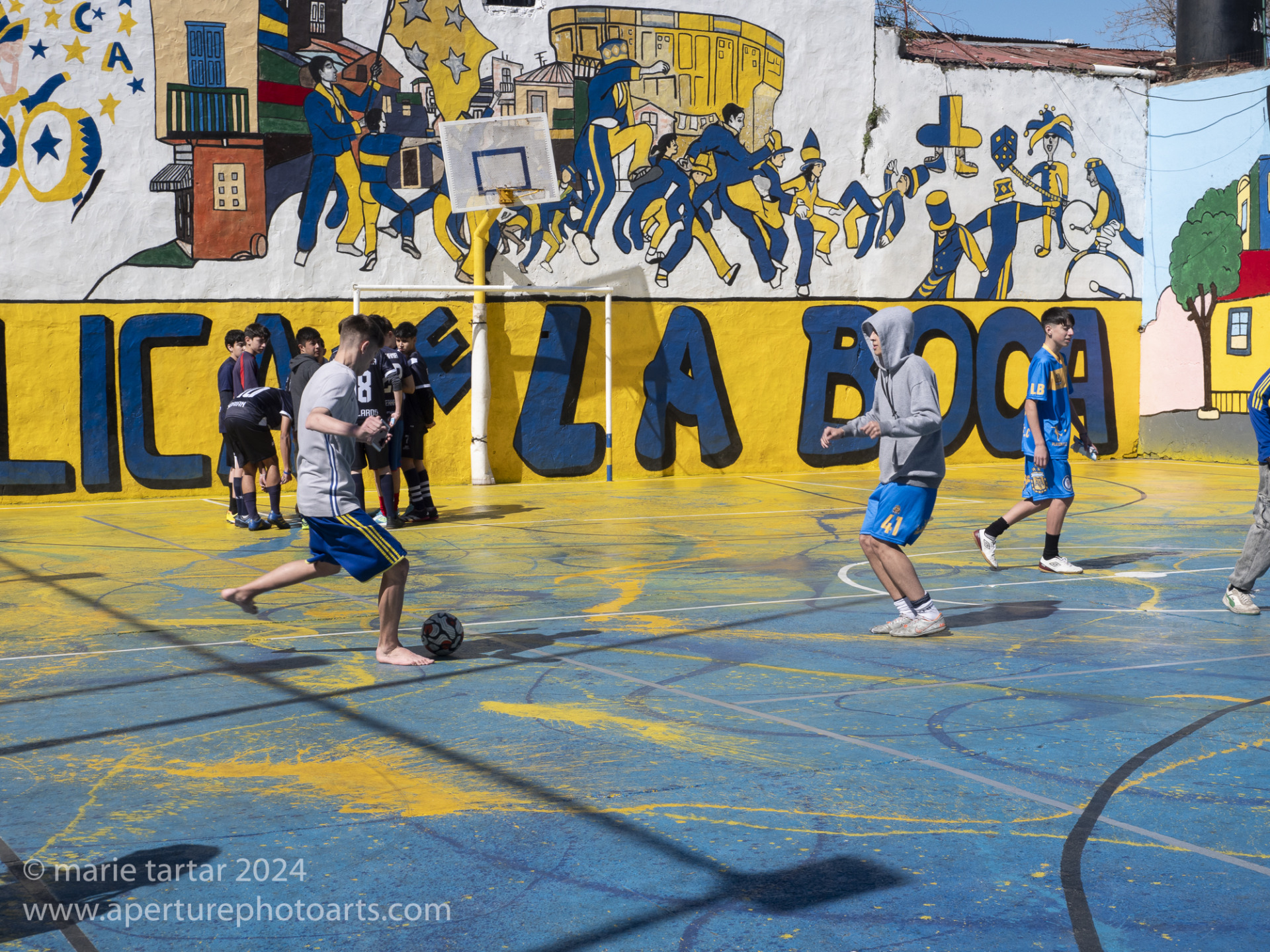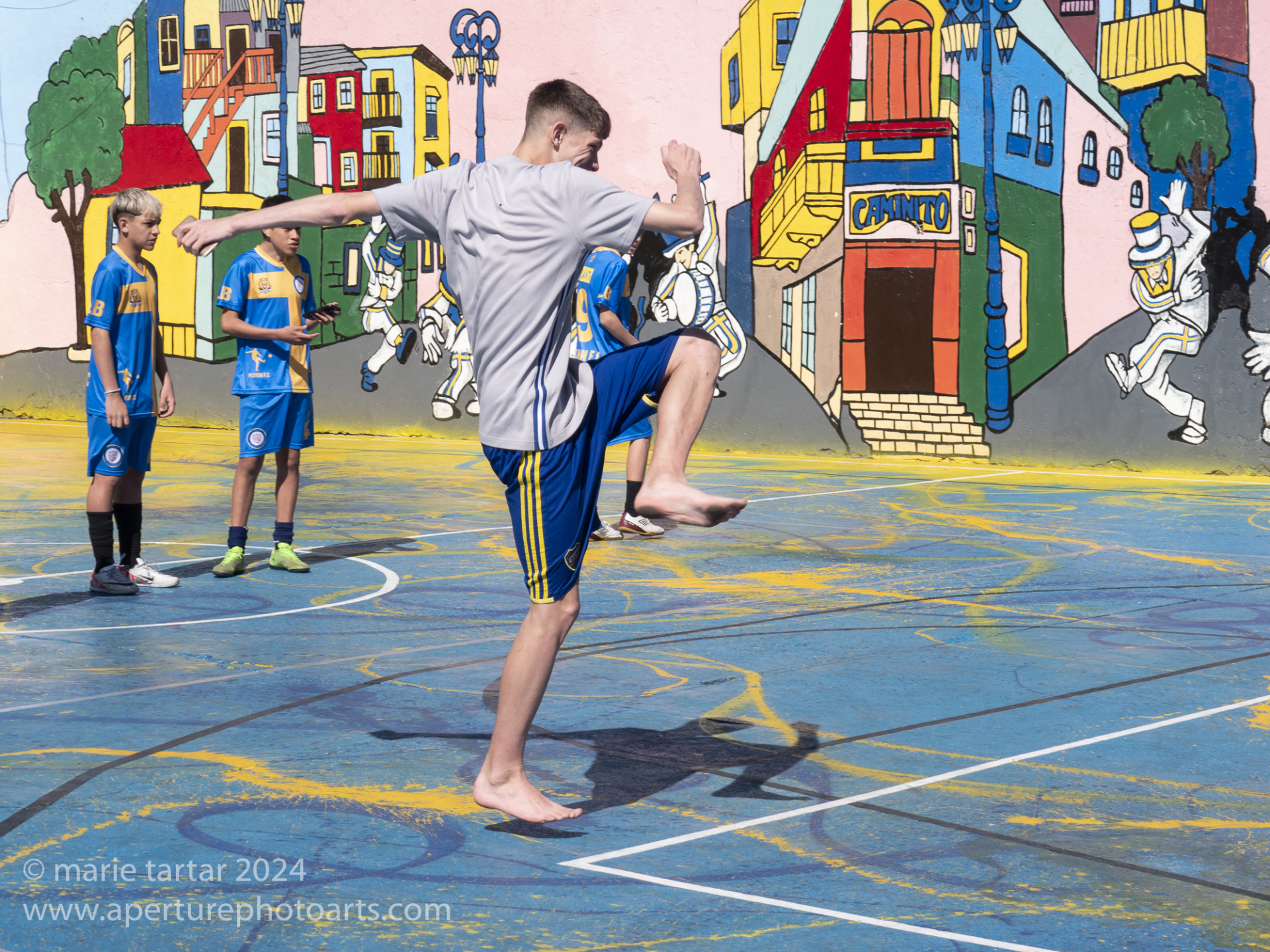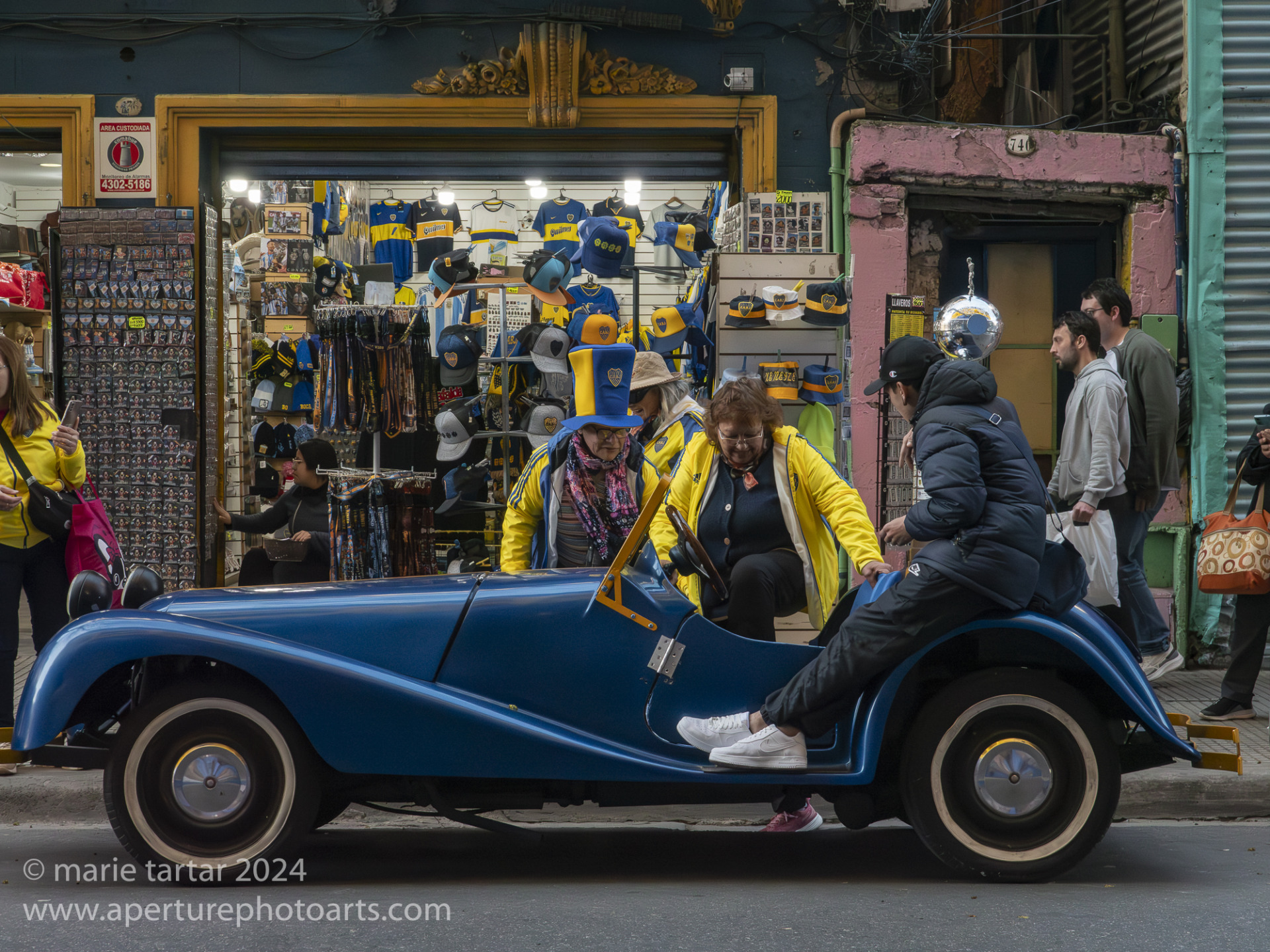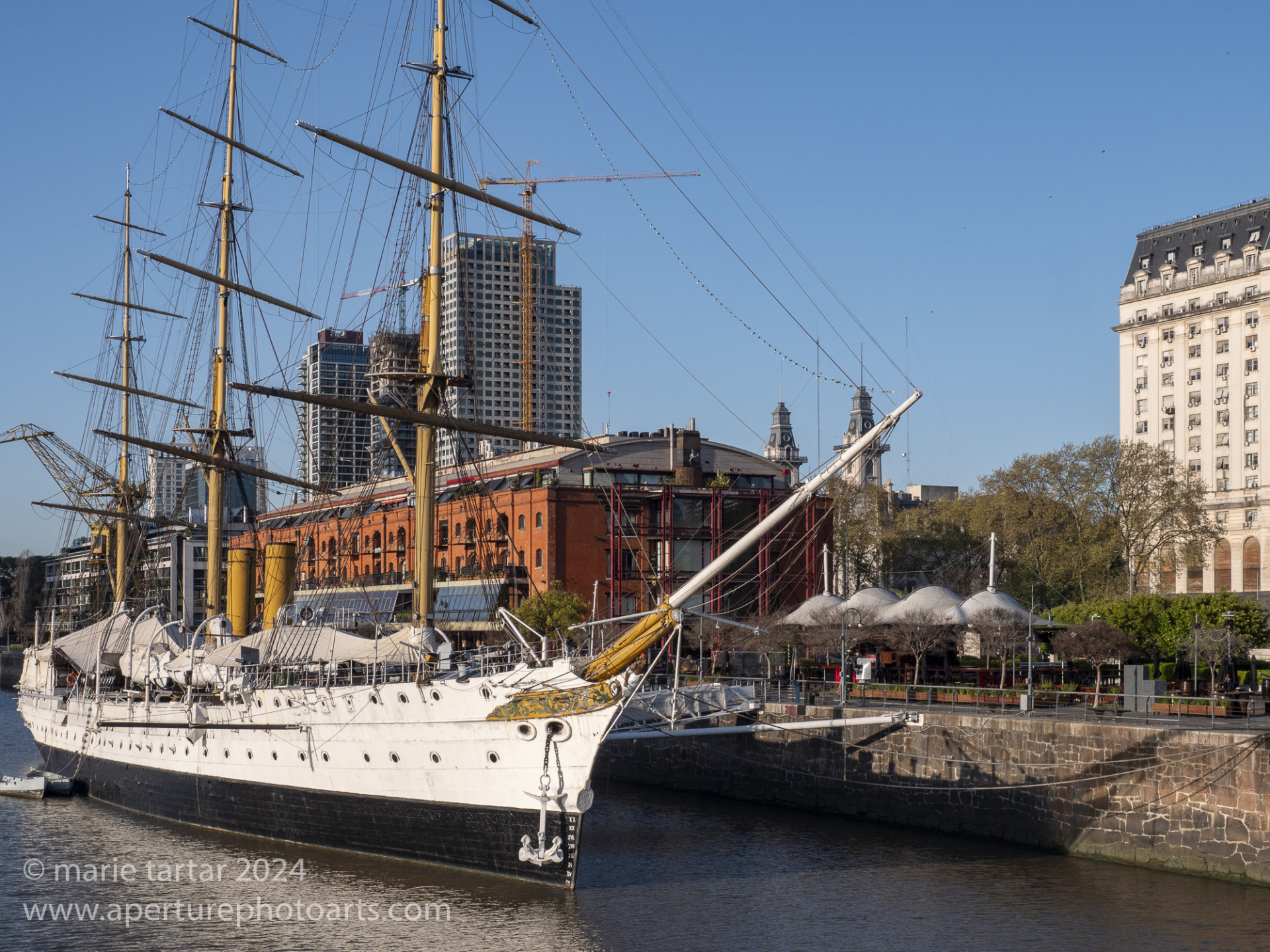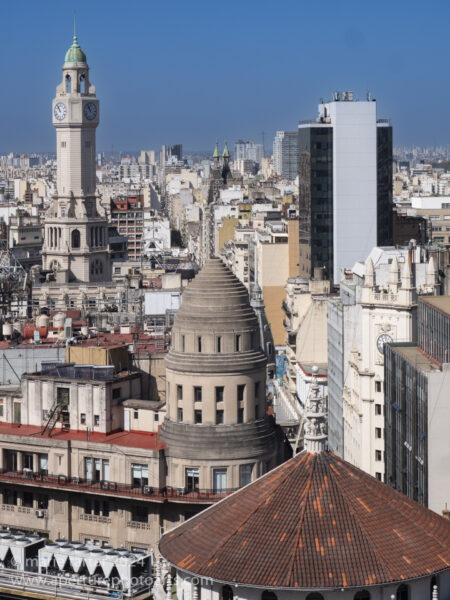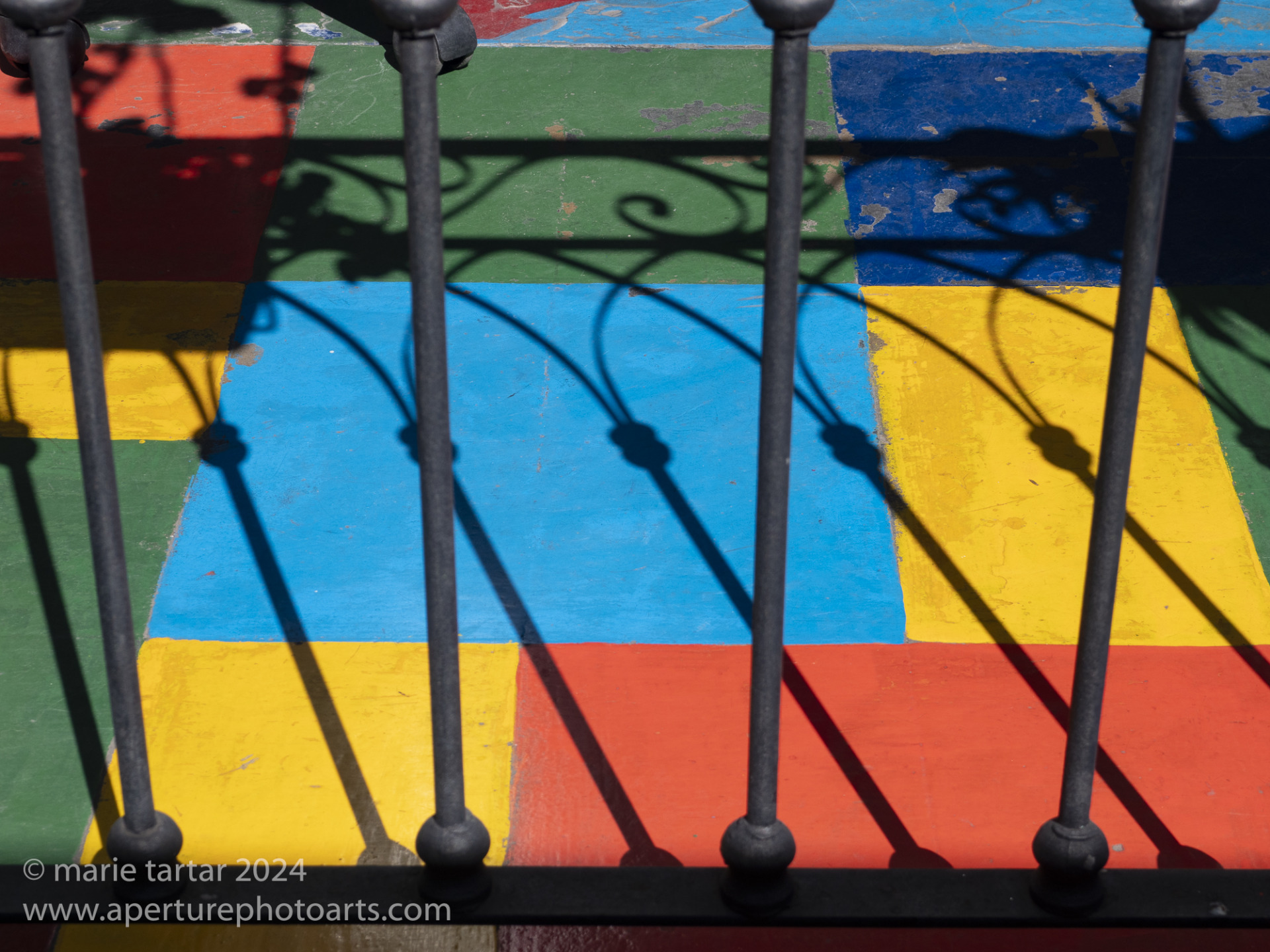
Thursday, September 12-Saturday, September 14, 2024
What possesses someone to enter, REPEATEDLY, 50 degree F water in a wetsuit? (That’s 10 degrees C, which sounds even more frigid!) Not to mention, spending a good chunk of change and flying to South America to do so? What else, but whales! Southern Atlantic right whales (SRW), specifically, known to congregate reliably each year near Argentina’s Peninsula Valdes, when they migrate north from Antarctic feeding grounds to mate, give birth and nurture their calves, usually beginning in July and extending through October. The scientific name for SRW is Eubalaena australis and they are one of three baleen whales in the genus Eubalaena, along with North Pacific and North Atlantic right whales, both critically endangered.

Eubalaena australis is confusing to look at, at first. The white patches, callosities, are roughly in the distribution of hair on a human, and enable individuals to be recognized. The two rows of white dots are in positions of a mustache and beard and are seen above and below the mouth. The largest white patch, just forward of the pectoral fin, is in position of eyebrows, with the eye itself small and just below the patch.
Yes, my ongoing whale obsession drove this trip. I had been looking for an opportunity to photograph SRW, but the season is short and tightly controlled, with only a few government permits issued each season. One operator’s initial offer (Wildlife Photo Tours, led by Franco Banfi) of an August trip to Peninsula Valdez for southern Atlantic right whales, combined with Chile for pumas) interested me enough to begin corresponding with his partner Sabrina in 2023. However, by April 2024, it became apparent that a truncated version of the trip would be offered, only to Puerto Piramides for the SRW in August, as the necessary permit for the Chilean segment of the trip could not be secured. After discussion with our accomplished photographer friend Phil Colla, who had been 3 times with another operator, Adriana Basques from the Bay area, we opted to sign up for the two available spots she had on the second of two back-to-back trips in September. Both organizers offered 6 in-water days, but Adriana’s were spread over 10 days, offering us flexibilty with the weather. Since there were only two spots available, and Steve was dubious about the cold water, Greg and I snagged the openings.
Thus started one of the more extended and expensive buying sprees necessary to prepare for this expedition, which differed in material ways from all of our previous SCUBA diving and whale snorkeling trips. We have dived in even colder water before, in British Columbia (46 degrees F) and even Iceland (37 degrees F), but in drysuits. It is possible to snorkel in a drysuit, but they are less maneuverable than wetsuits, plus there’s the problem of no bathroom on the boat, which would generally be out all day.
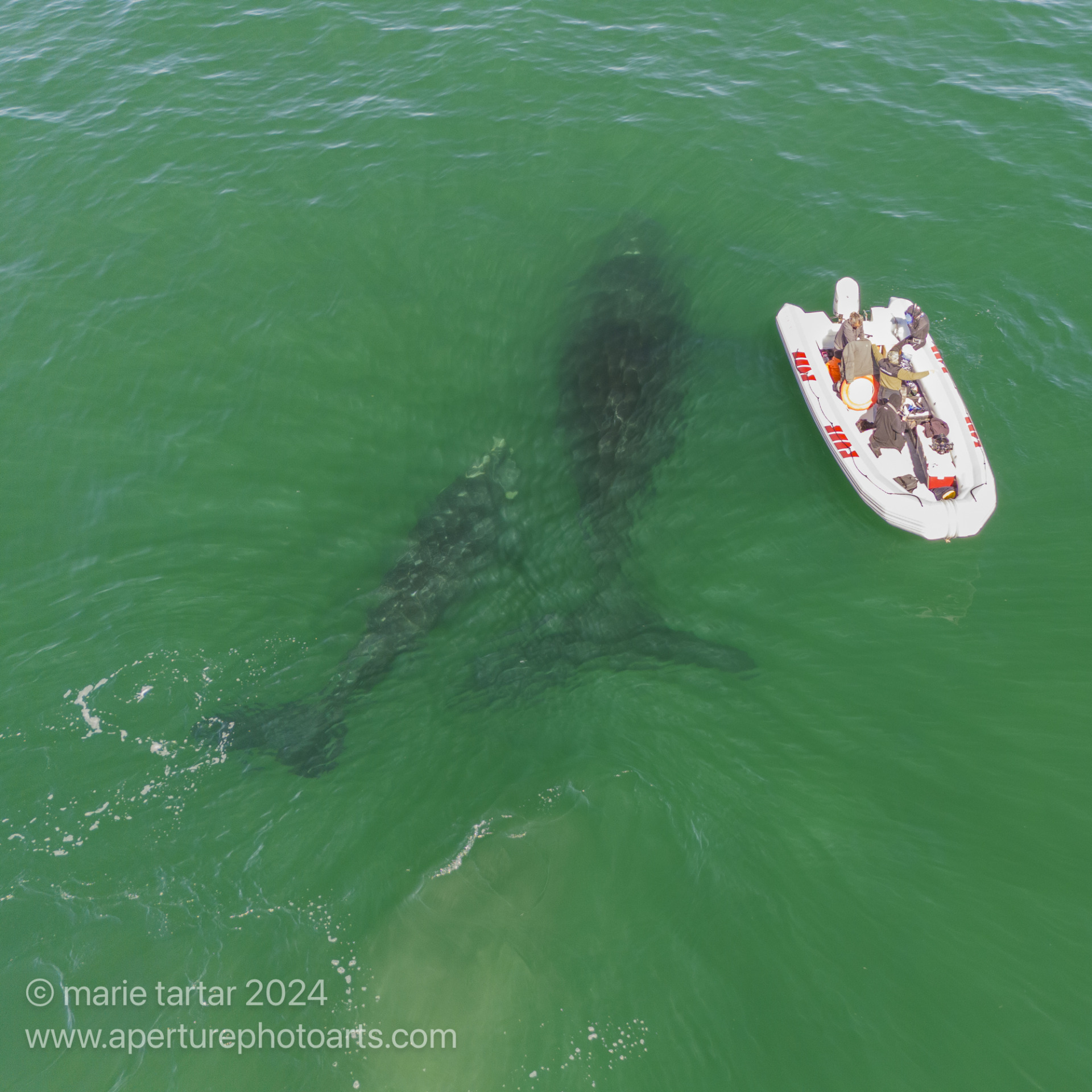
No bathroom on this small open boat, on which we’d spend our days, making the choice between a wetsuit and a drysuit clear! Mother and calf SRWs dwarf our boat.
I opted to acquire a 7 mm semi-dry wetsuit and a Venture heated vest to wear underneath. Bright blue, kitchen sink-type dry gloves, with a latex wrist seal, were procured, as were 7 mm neoprene Yazbeck socks, which I paired with Steve’s snorkeling fins. I also upgraded my SCUBA booties to Fourth Element and brought along my SCUBA fins, just in case. I brought 5 mm neoprene gloves and 7 and 10 mm neoprene hoods as well.
Additional preparation required for this trip was documentation of our photographic chops. Only professional-level photographers with housed cameras are permitted to swim with the whales. We essentially had to submit a group application, the equivalent of a portfolio review, to justify our permit. Thankfully, this was Adriana’s 10th year leading such trips so she knew what was necessary. For the purposes of this trip, not having a web presence other than his Instagram account, Greg was Adriana’s “assistant”.
Greg and I decided to explore Buenos Aires (BA) for a few days before flying to Trelew on a Tuesday to meet up with Adriana, who would already be there with her first group (coincidentally, a couple we knew from our last dive trip to Cuba, Margi and Eric from Orange County and Adriana’s husband, Clark). We had spent a few days in BA before, in 2019 over New Year’s Day, en route to Antarctica, but knew there was much more to explore. It turned out it was lucky we padded the first part of the trip with extra days as I ended up having to spend an unexpected whole day in Miami, after my overnight flight to BA was cancelled at the last second. I had an envelope left over from our prior stay in BA, with a Subte subway card and 1850 Argentine pesos, amounting in 2015 to $36 US, now devalued by time and rampant inflation to a value of $2 US!
Even if it had proceeded perfectly, I had a long and painful travel day ahead of me, 3 flights, including overnight from Miami to BA. I had a less than one hour connection in Phoenix, made tighter by a late departure. They were already boarding Group 4 when I walked briskly from my disembarkation gate in Phoenix to my departure gate to Miami, thankfully just a few doors down. At that point, I was worried about my luggage making the transfer. I relaxed once en route to Miami.
Ensconced comfortably in the Flagship American lounge in Miami, I didn’t initially worry as my flight to BA was repeatedly delayed, first 2 hours, then another hour, finally 4.5 hours. As the clock inched toward 2 am and our new departure time, the lounge became increasingly quiet. With a few minutes until boarding time and the gate only a few steps away, I was just packing up my chargers and carry ons when a janitor came by and looked askance at seeing me, hidden in the recesses of the lounge in the Quiet Area. He said something I took to mean the lounge was closing. Across the hall, the departure gate was nearly deserted and the board, which only minutes before had still indicated a late departure that evening, suddenly read Delayed, indicating a new departure time of 8 pm-the following evening! I made my way out to find a huge crowd (evidently a whole plane full) queued up at the American counters for vouchers. There was what appeared to be a short line at counters marked Special Services, so I headed there, only to be rebuffed by an agent who indicated the huge line. As I retreated and regrouped, I saw a text from American offering me a hotel voucher electronically. Thus I landed at a Marriott Bonvoy Element at 2 am on a muggy and sultry Miami evening, even at that hour.
This outcome was ironic, me being delayed a whole day. Earlier in the day, Greg had texted to say his departure out of Chicago was delayed, endangering his connection in Houston to BA. Indeed, he would have missed it if he had stuck with his original flight. He was on stand by for an earlier flight which he made, which enabled him to barely make the flight to BA. Otherwise, he would have been the one delayed a day. As it was, his luggage did not make the connection.
A Spanish-language black comedy called Alimañas (Vermin) entertained me when I finally was en route to BA. Two very different brothers (Jordi Sánchez and Carlos Areces) stand to inherit an apartment building, and its tenants, from their ailing elderly mother.
When I finally made it to BA, a day later than planned, it was now Saturday. A flood of relief washed over me when I spotted my name on a handwritten placard held by Ramon at the airport in Buenos Aires. Chatting with him on the drive in, I learned he immigrated from Venezuela 9 years before and formerly worked in telecommunications. His two sisters remain in Venezuela, with the rest of his siblings scattered from Miami to New Jersey to Australia.
Adriana had recommended the Miravida Soho, which proved to be a delightful small boutique hotel in Palermo Soho. Adriana had negotiated a cash rate for us ($125 USD). My room (5) was decorated with a bold rose patterned wall paper and burgundy accents. A small balcony overlooked the courtyard, just big enough for 2 chairs. Breakfast was substantial enough to hold me until dinner.
We had arranged outings with Photo Tours Buenos Aires’ Bernardo Galmarini.
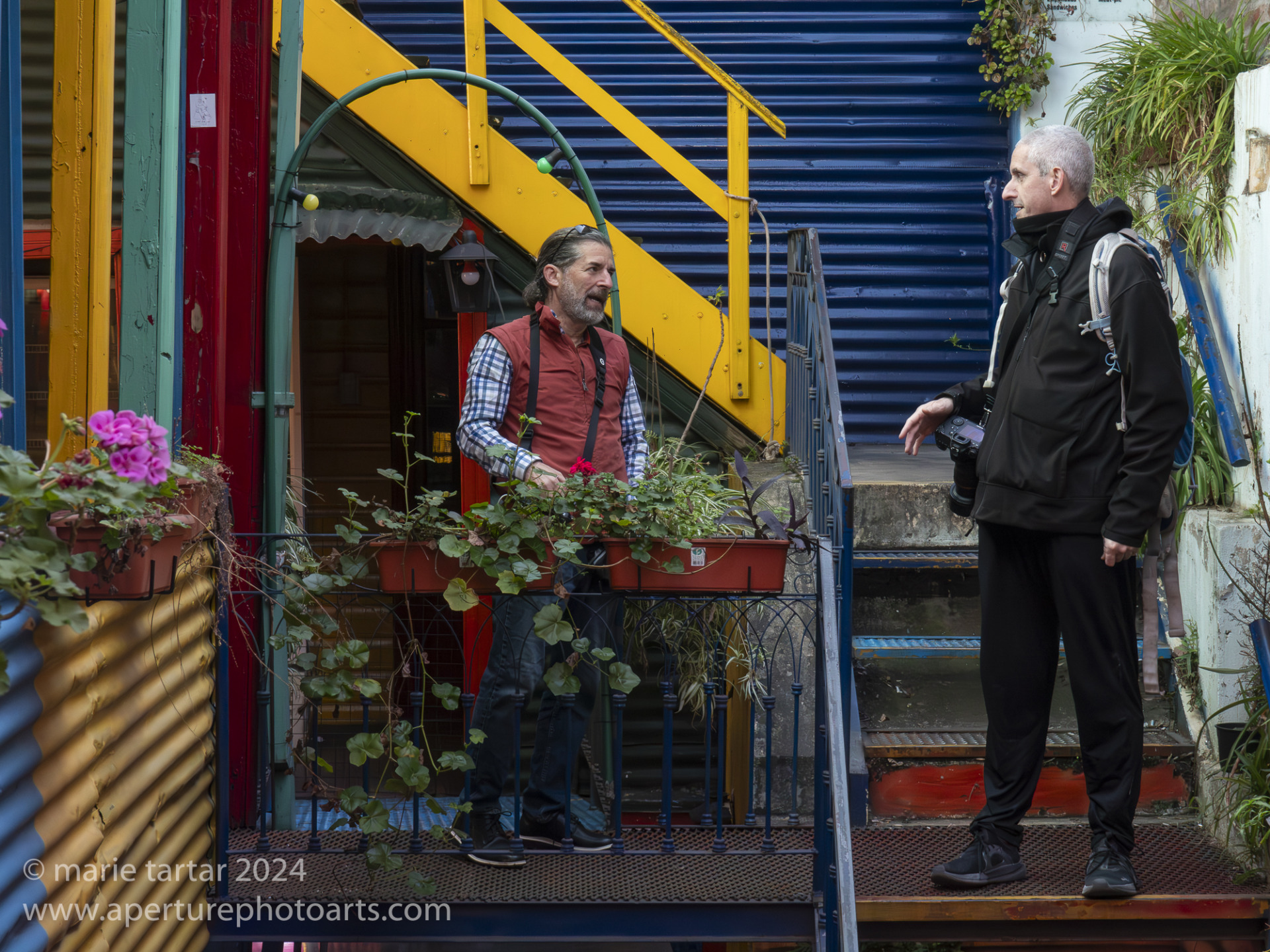
Greg with our Buenos Aires photography guide, Bernardo Galmarini (right), in an artists’ complex in La Boca, BA.
Bernardo had been patiently formulating and reformulating by text multiple plans as our actual and threatened arrival times kept changing. He came to the hotel to meet us at 12:30.
Our first stop was an English language tour of Teatro Colón, a splendid, lavishly decorated marble and gold edifice dating back to 1858, evoking the splendors of Europe with French and Italian design flourishes. The current structure opened in 1908 and was reopened after an extensive restoration in 2010. The lobbies are awash with sculptures, carvings and filigree.
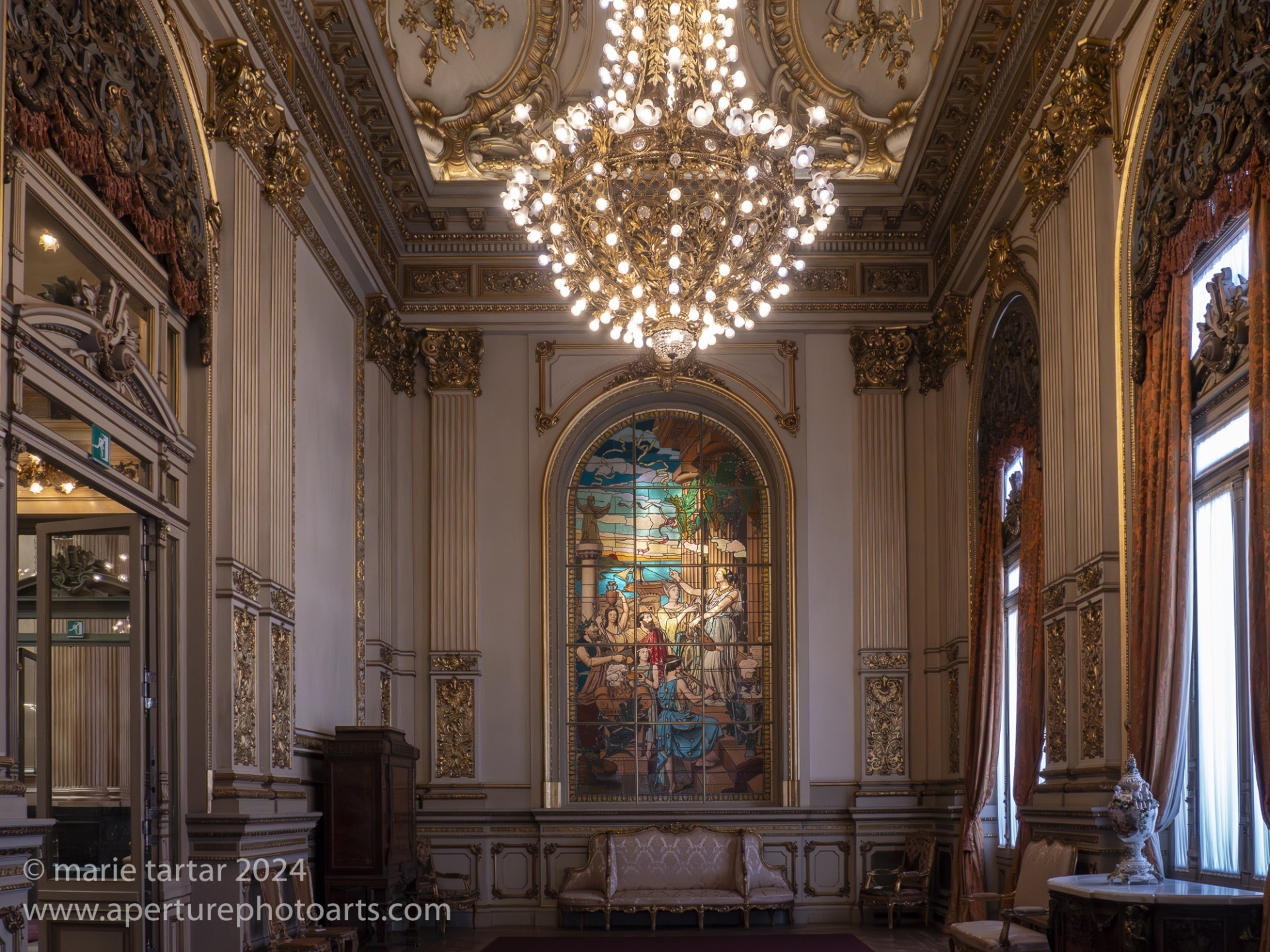
Versailles, anyone? The Salón Dorado or Golden Hall of Teatro Colón, a National Historic Monument, considered one of the best opera houses in the world.
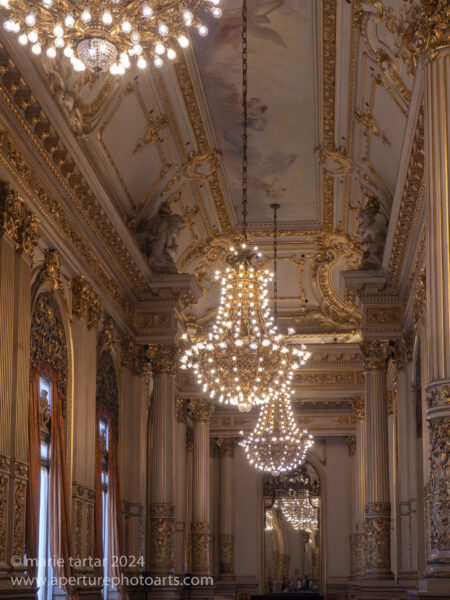
The ceiling of the Salón Dorado of Teatro Colón is lavishly decorated with frescoes and adorned with imposing chandeliers.
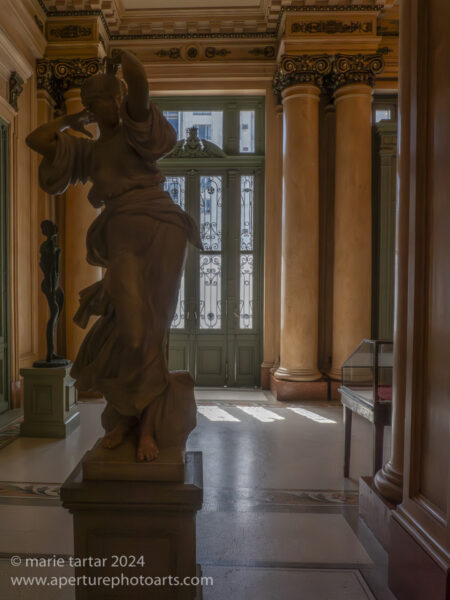
Statuary, pillars, wrought iron, mosaic floor, Teatro Colón has a plathora of architectural flourishes.
We were able to wander around the interior of the opera house itself, as the orchestra was rehearsing, but we were able to creep in and were treated to a mini-concert.
Next, we headed to the outskirts of the famous Recoleta Cemetery. We had visited it twice on our prior trip, so didn’t head inside, but photographed it from an adjacent apartment building and a nearby shopping center.
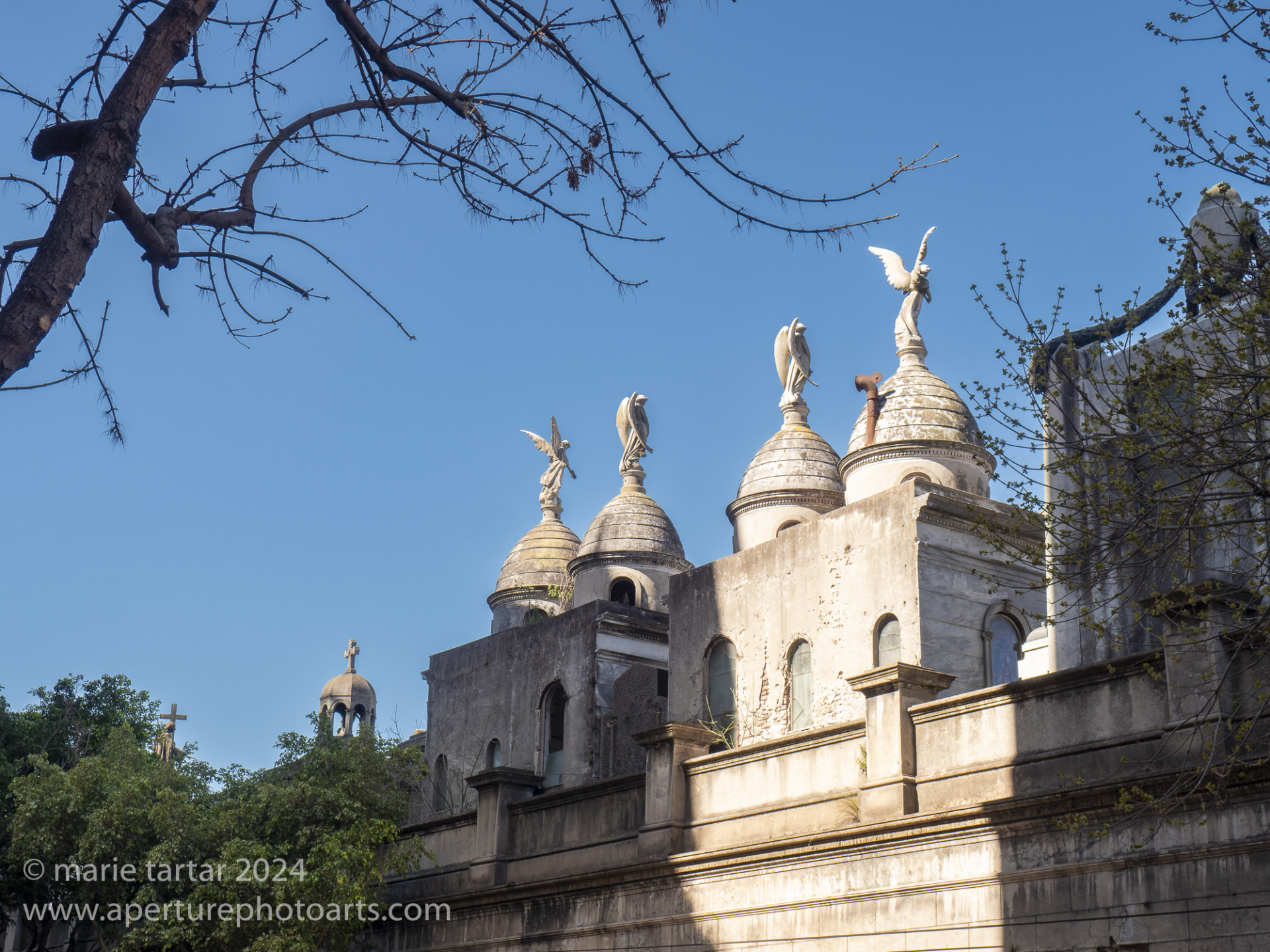
Recoleta Cemetery is replete with elaborate statuary and masoleums, a veritable who’s who of Argentine history.
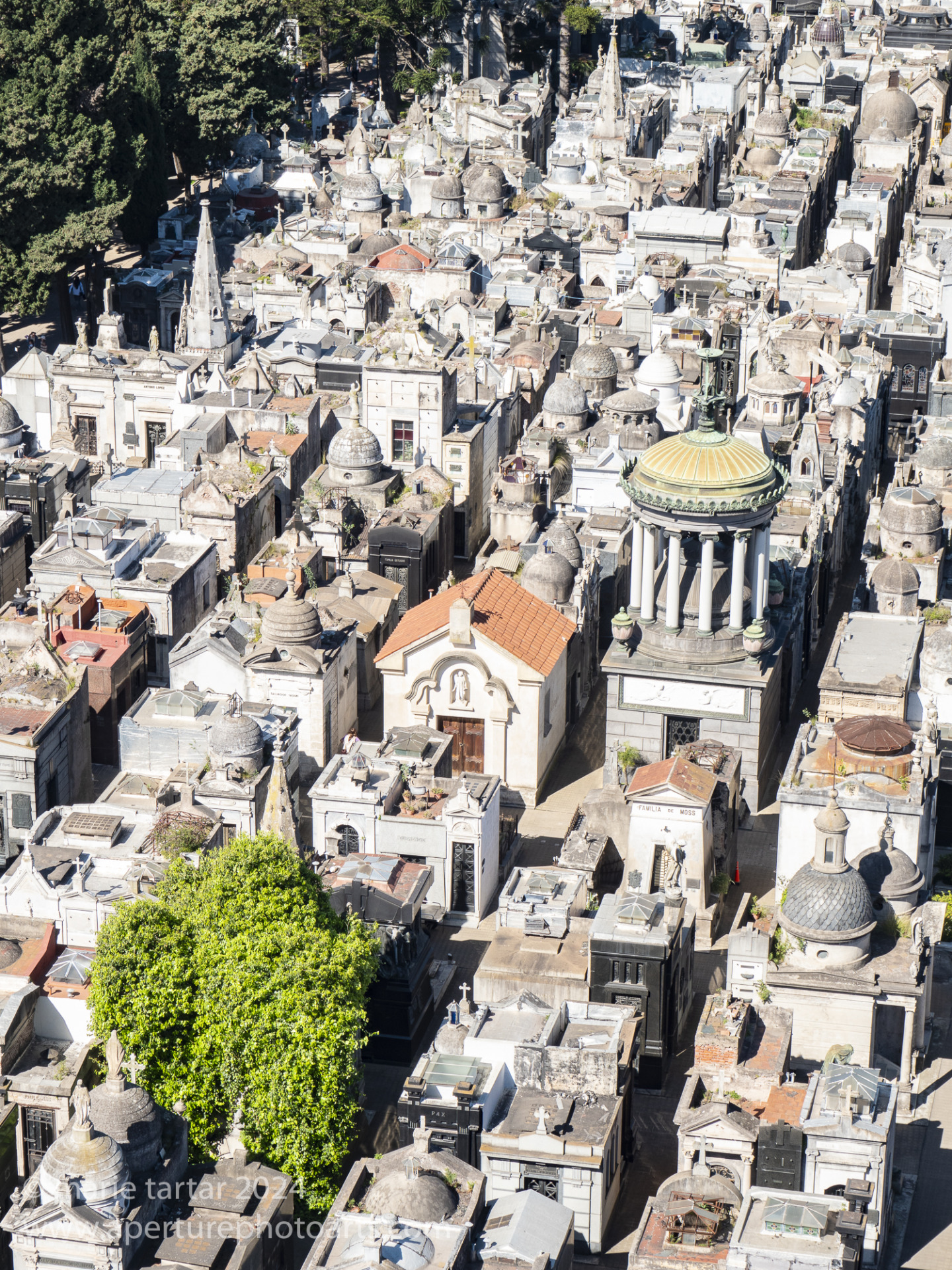
Recoleta cemetery, virtually an aerial view, although taken from an adjacent apartment building to which Bernardo had access.
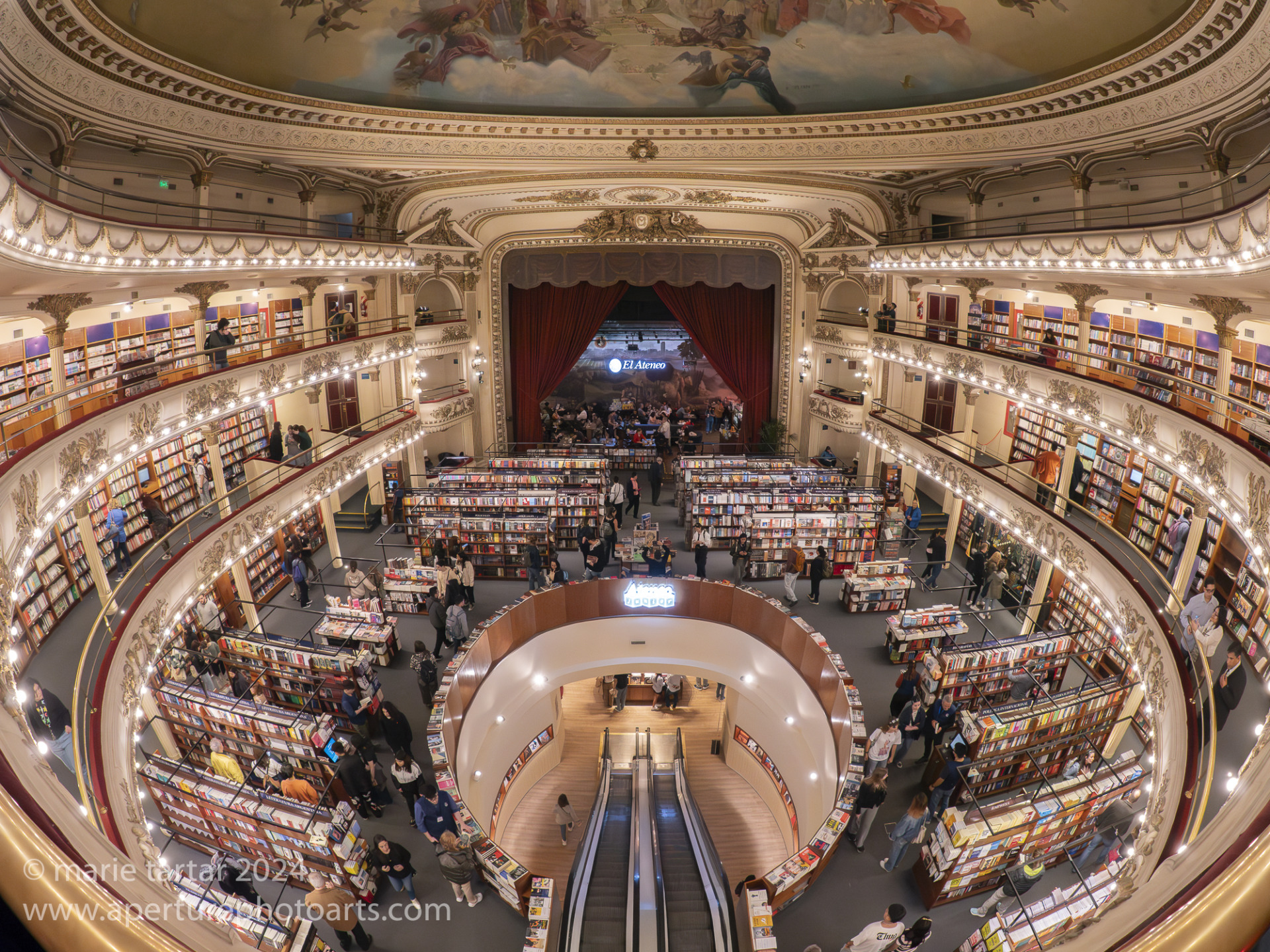
I requested this destination, El Ateneo Grand Splendid, a lavish, converted 3-story theater, now a landmark book and record store. Inaugurated in 1919 and designed by architects Peró and Torres Armengol, it became a cinema on 1929, the first in BA to show a talkie. Architect Fernando Manzone orchestrated the theater’s conversion into a book store after the bulding was acquired in 2000.
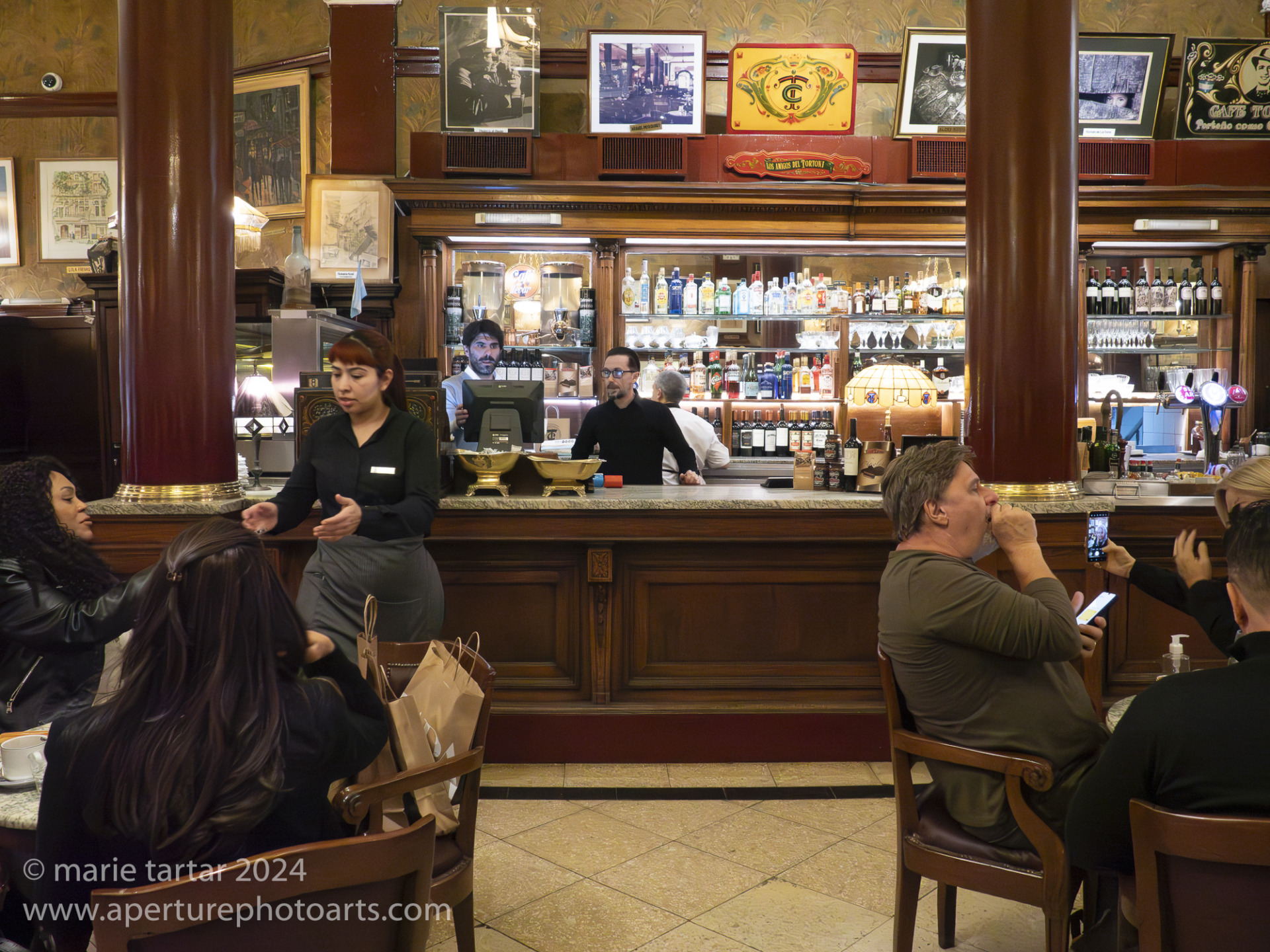
We ended our afternoon with Bernardo at a classic coffee house, Cafe Tortoni, dating back in this location to 1880.
I had asked foodie Greg to arrange our dinner reservations for this trip, a task he capably dispatched. Tonight’s dinner, at a Relais and Chateau, Aramburu, had no less than 18 courses and was a veritable feast of molecular gastronomy. We sensibly shared a wine pairing.
Sunday, September 15, 2024
Bernardo met us at the hotel in the morning. We Ubered south to La Boca, a colorful historic neighborhood.

Street art is very big in Buenos Aires. We actually did a street art walking tour ona very hot New Year’s Day in 2019 when few other tourist options were open. Historically, La Boca was a poor immigrant neighborhood. It apparently was a drab port city whose residents made ample use of paint, left over from river barges, to brighten up their surroundings. Today, it is known as the birthplace of tango and the stadium home of the country’s most famous soccer team, Boca Junior.
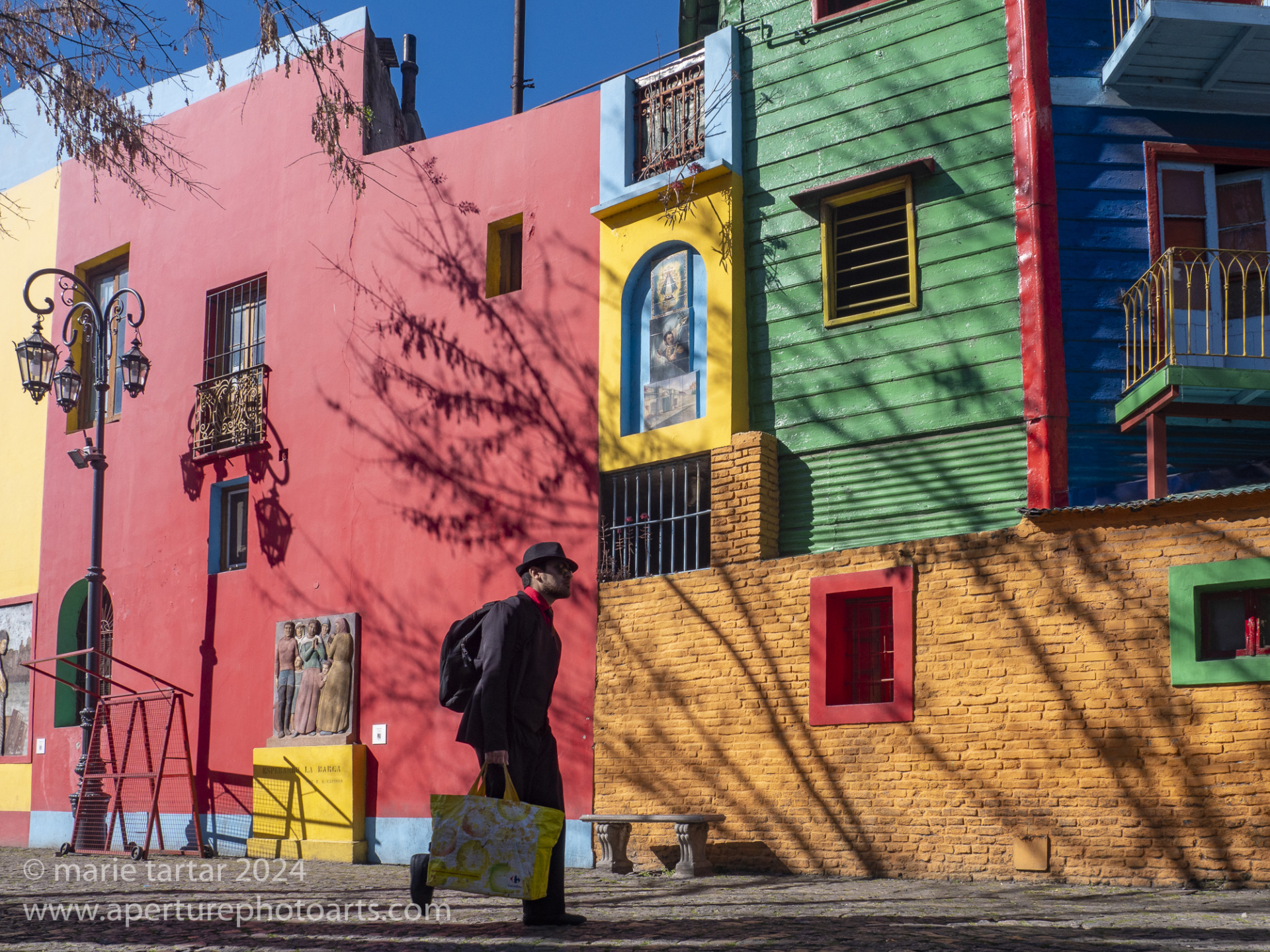
Quintessential La Boca (the mouoth, referring to the river mouth on which it is situated), a patchwork of colors, set off by this pedestrian’s red shirt.

We encountered this agreeable accordian player in a former conventillo, a type of rooming house shared by multiple families, which now functions as a warren of artist studios.
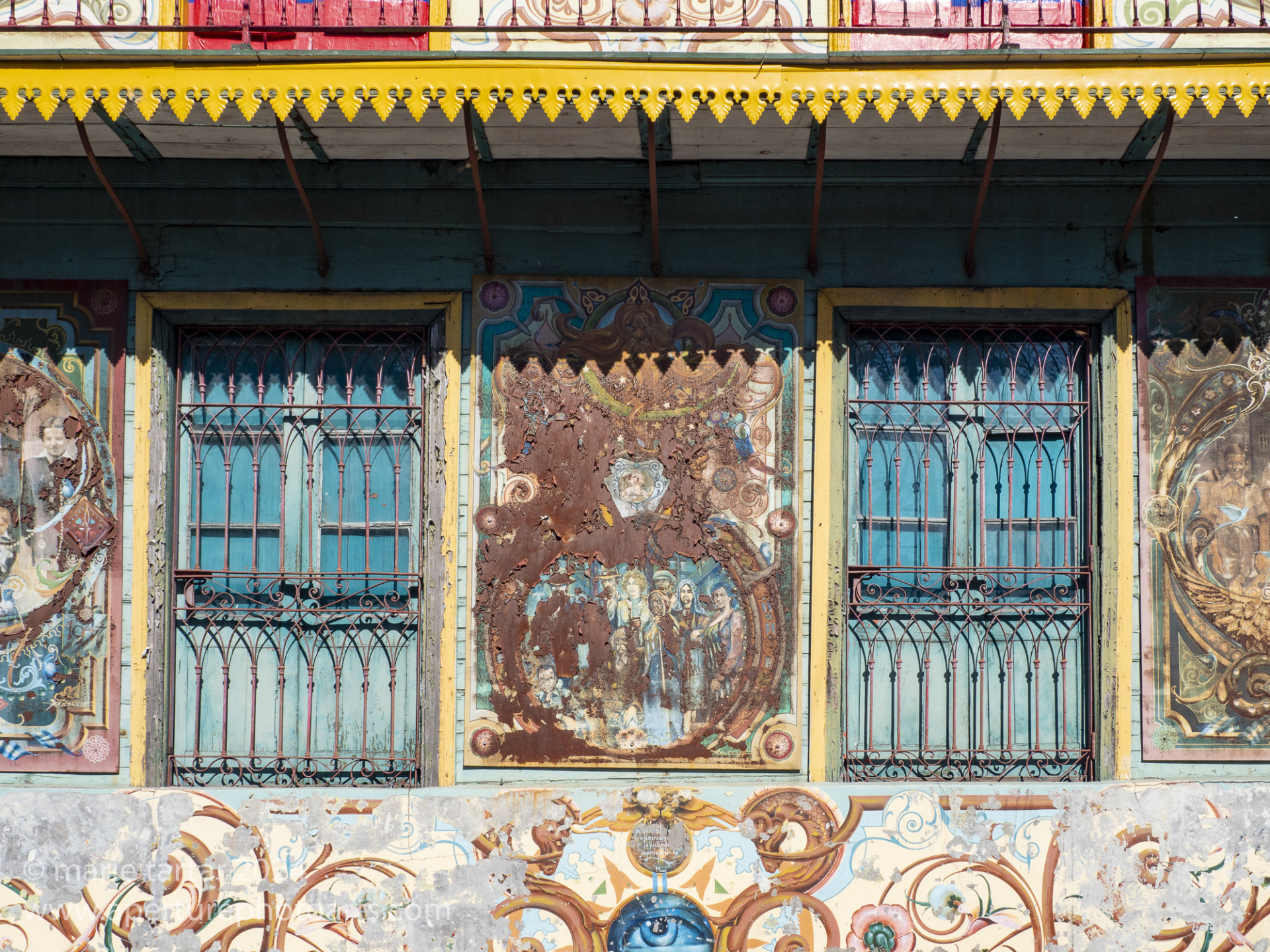
This decorative style of painting is known as fileteado porteño (from the Latin word filum, meaning “a fine line, or thread-like”) and was cited by UNESCO in 2015 as Intangible Cultural Heritage of Humanity.
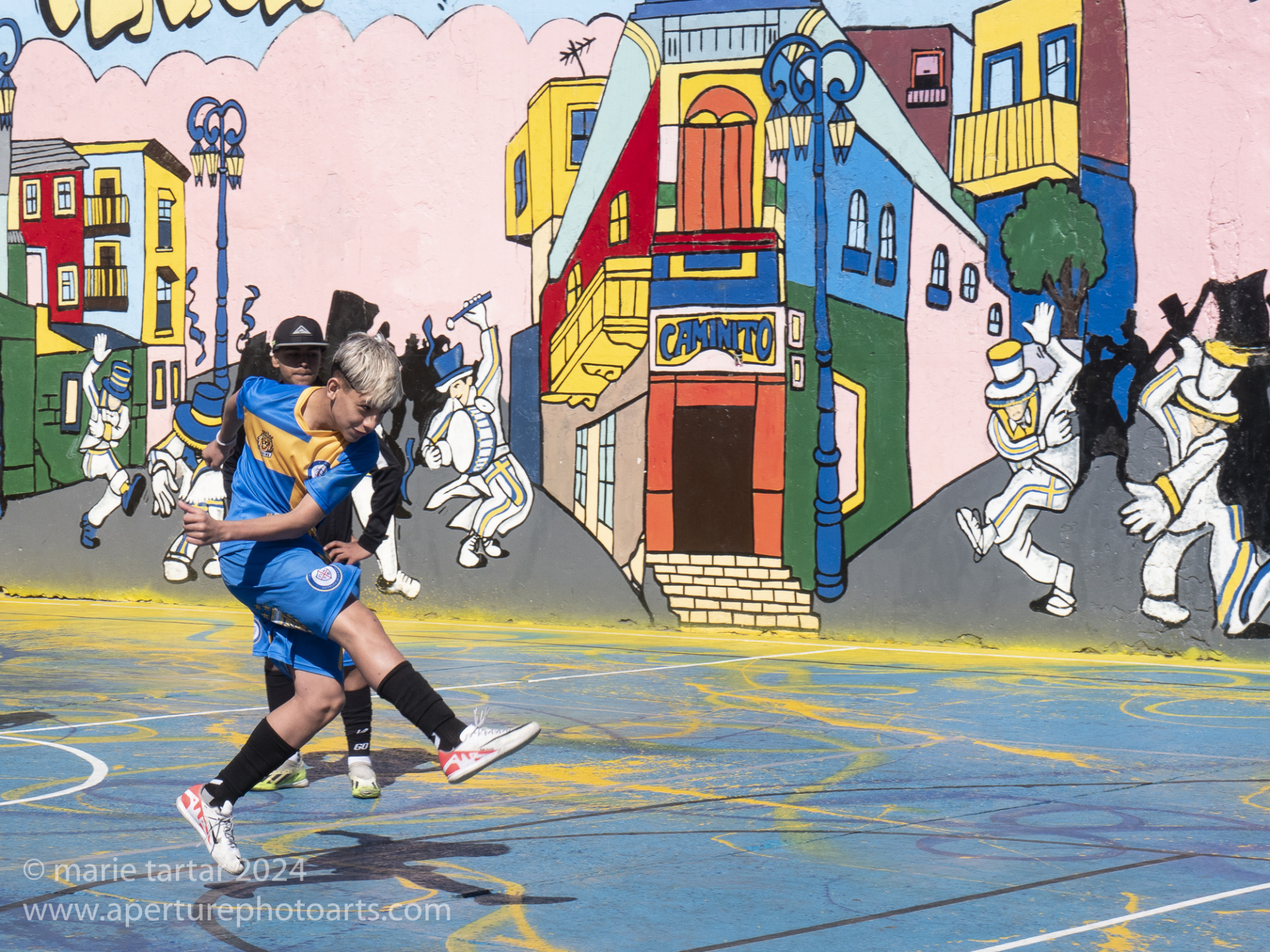
The soccer player’s stances mimic those of the band depicted on the mural behind them, in La Boca, BA.
Another famous neighborhood, San Telmo, was bustling with a Sunday street market.
We had lunch at an Italian restaurant, Napoles, decorated with vintage cars and antiques throughout the restaurant. The gleaming cars were parked between the tables, some of which were fitted with vintage dentist chairs.
Our vegetarian dinner at Marti that evening prominently featured mushrooms. The restaurant itself is a virtual greenhouse, a glass box built to within a few feet of the adjacent buildings, surrounded by abundant greenery.
Monday, September 16, 2024
Greg and I Uber in the dark to meet up with Bernardo at the Hilton in a newer BA neighborhood, Puerto Madero. We walked hurriedly towards the soaring silhouette of Puente de la Mujer, a Santiago Calatrava design.
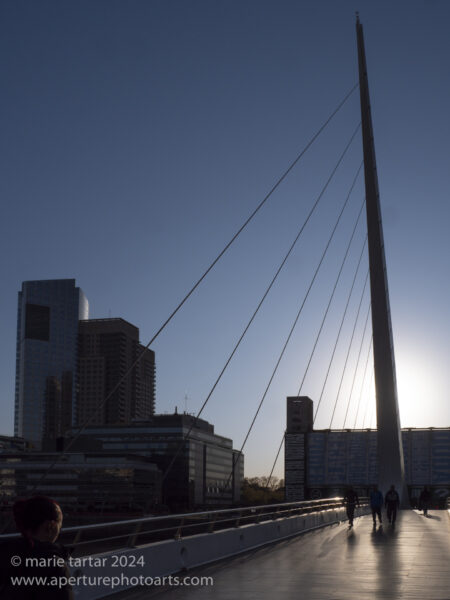
Runners out early criss-cross Puente de la Mujer (Women’s Bridge) in the Puerto Madero neighborhood of BA.
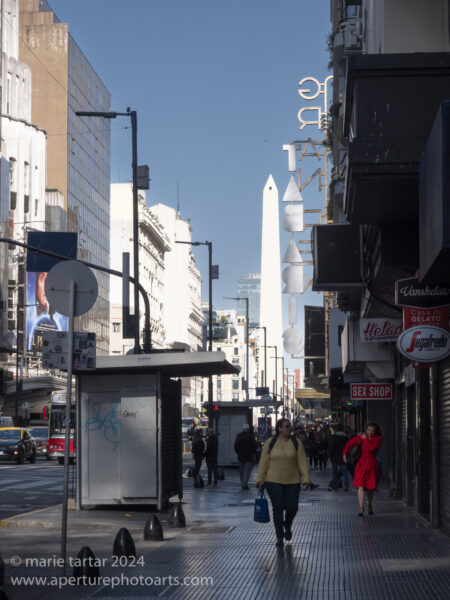
Downtown Buenos Aires street scene, with a sex shop nestled among ice cream stores, on the right. The Obelisco can be seen down the street.
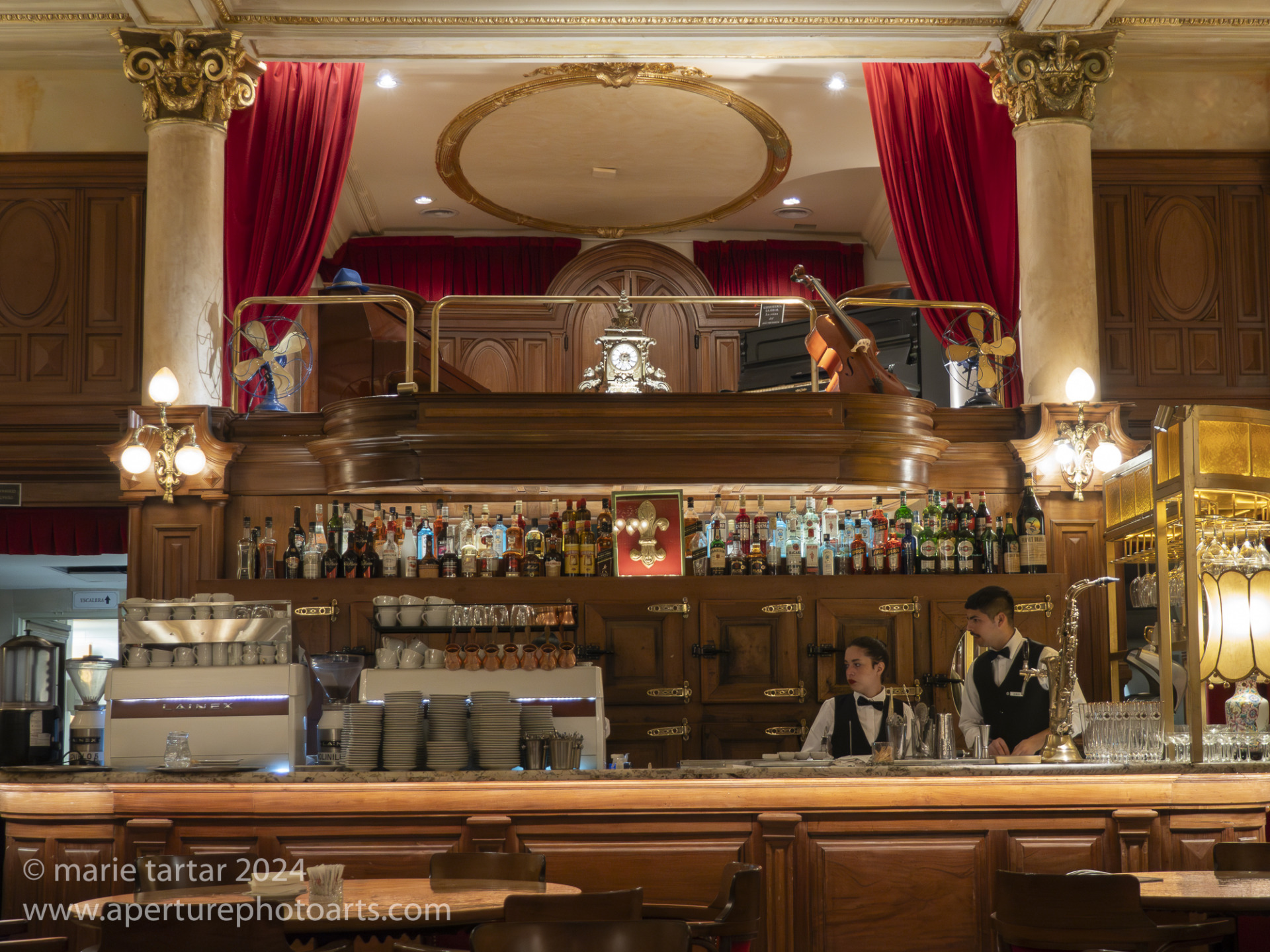
Another of BA’s classic cafes, Confiteria La Ideal, had been around since 1912 and underwent a 6-year restoration after closing in 2016.
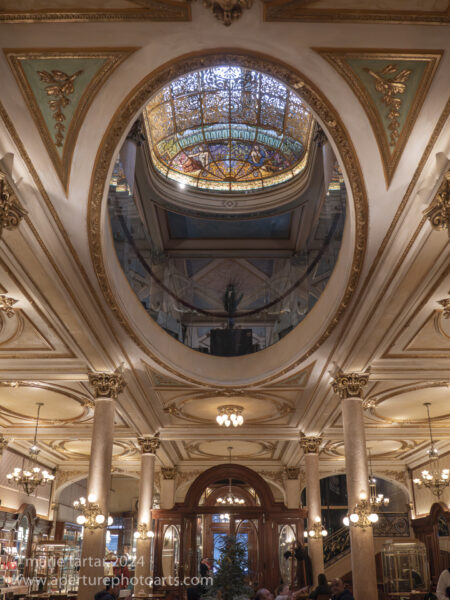
The ceiling with its painstakingly restored stained glass at Confiteria La Ideal is spectacular. A nice place for coffe, sweets and sandwiches.
We scoped out the German Club, on the 21st floor above Avenida Corrientes, for our planned evening shoot of cars streaming around the iconic Obelisco.
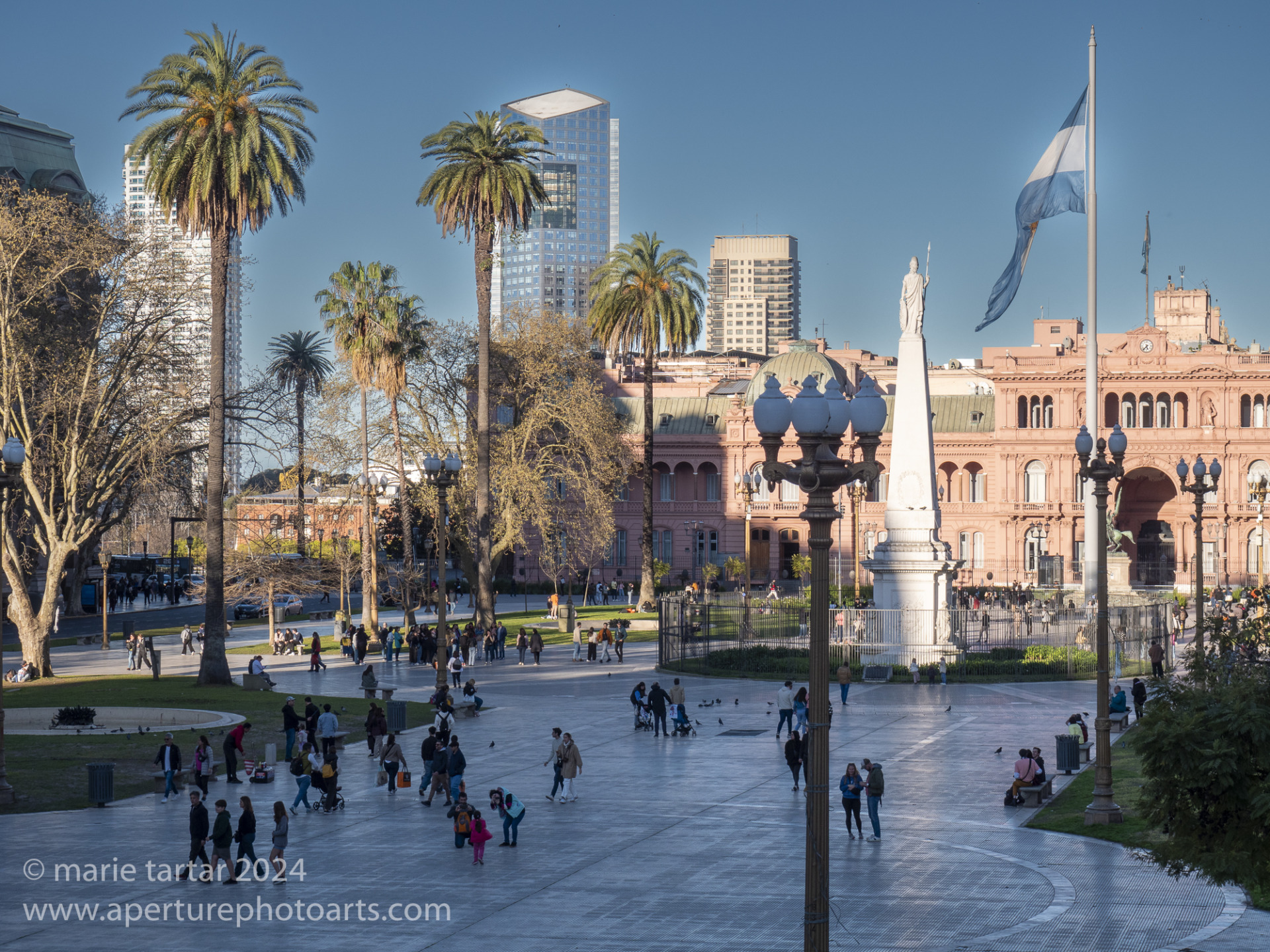
Plaza de Mayo, with Casa Rosada behind, Argentina’s equivalent of the White House, photographed from the Cabildo, the site of the town council in colonial times.
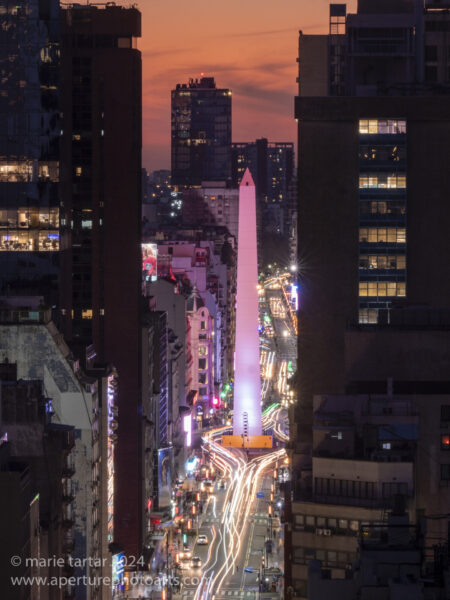
We lugged tripods all the way to Argentina, enabling this shot of traffic streaming around the lighted Obelisco as evening deepens.
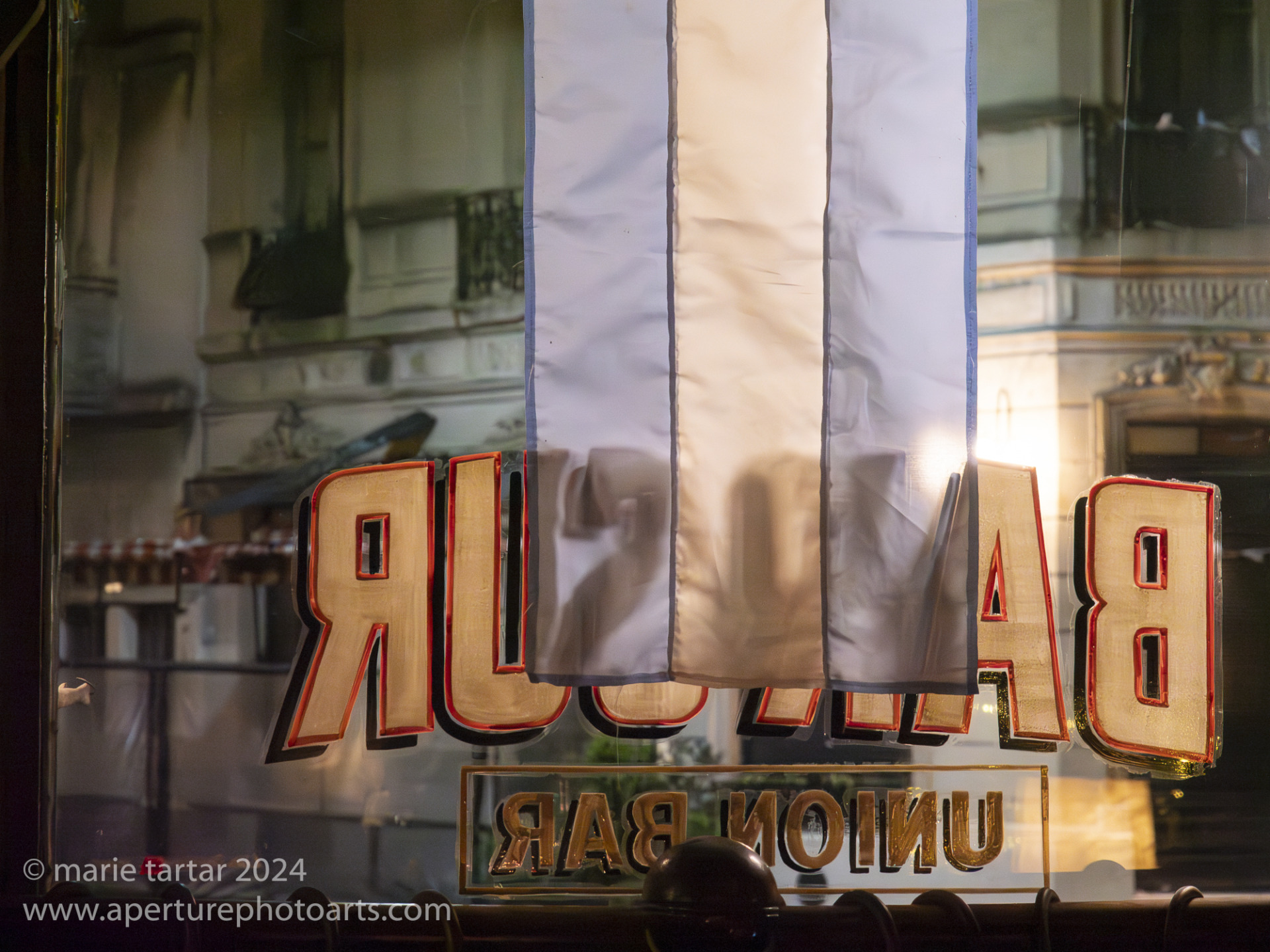
Bar Sur in San Telmo is a charming small venue, small enough that occasional tables were smacked by flying legs and a plate was sacrificed during the performance we watched.
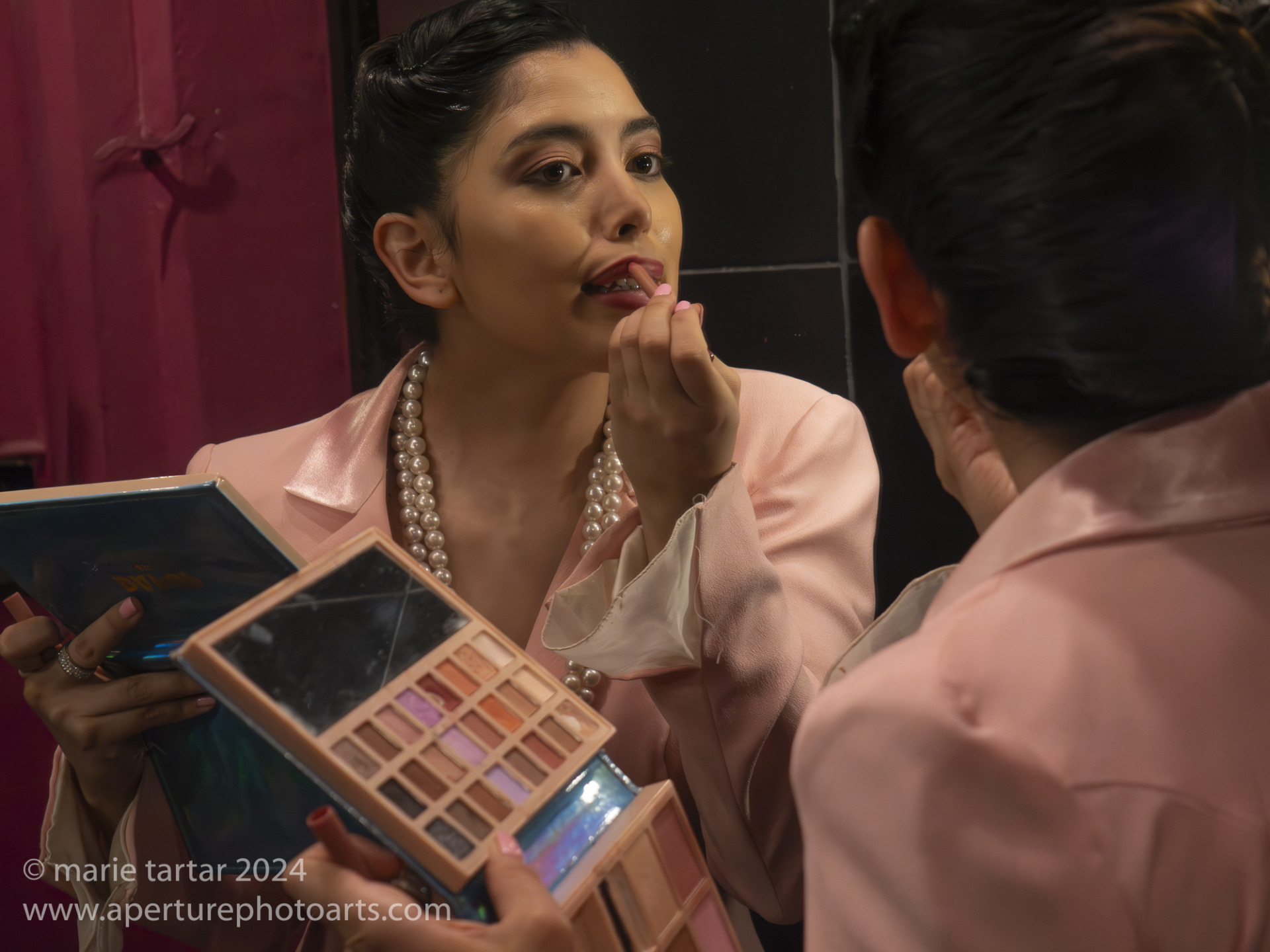
Going to Bar Sur with Bernardo for a tango evening (including pasta dinner and a performance) enabled us to go backstage beforehand with our cameras as the dancers prepared their makeup.
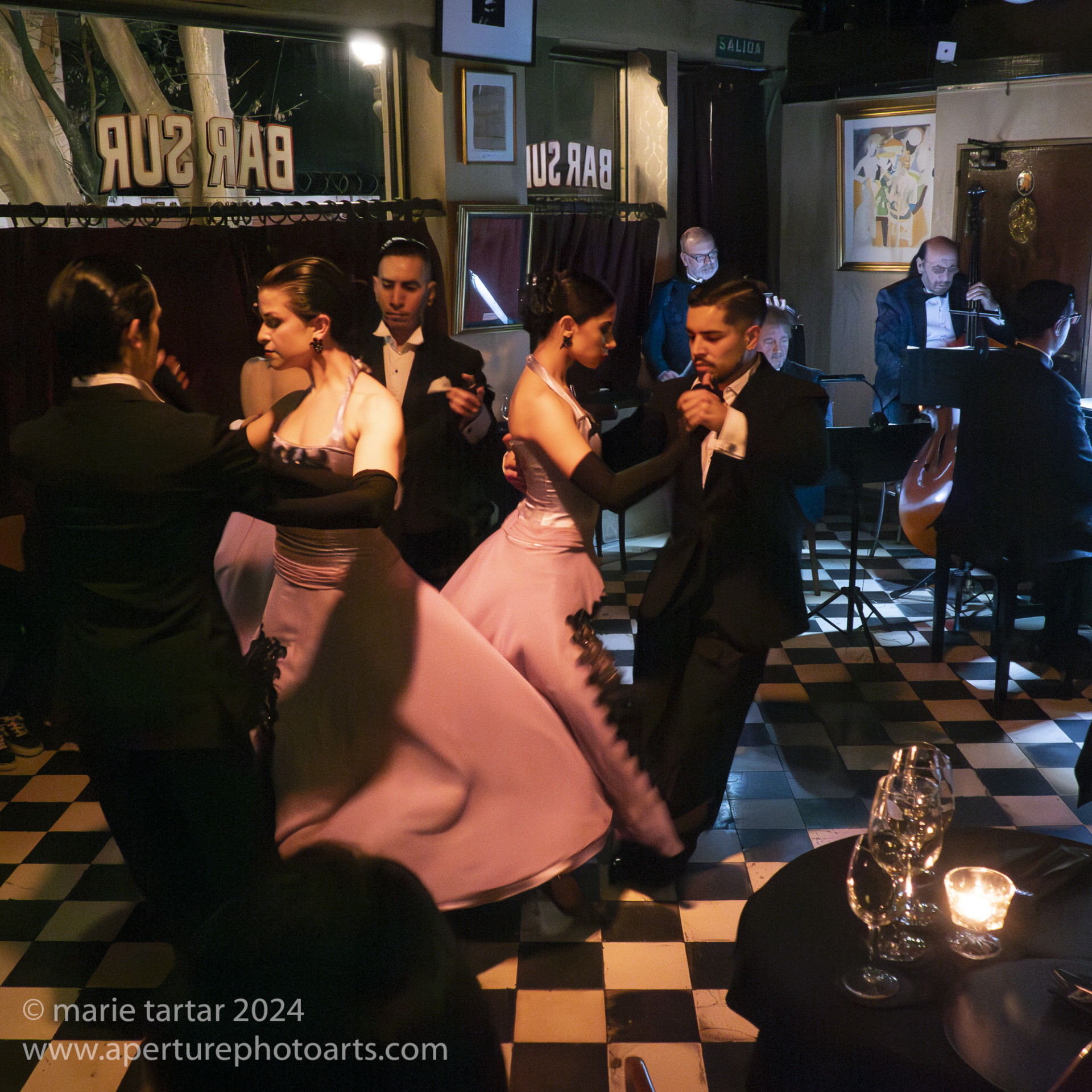
I dodn’t have a particularly fast lens with me on this trip so I really had to max out the ISO capabilties of my underwater rig, Panasonic GH5 mark ii. Thank goodness for Lightroom’s improved noise reduction capability! (f4.5, 1/30 second, ISO 25,600!)
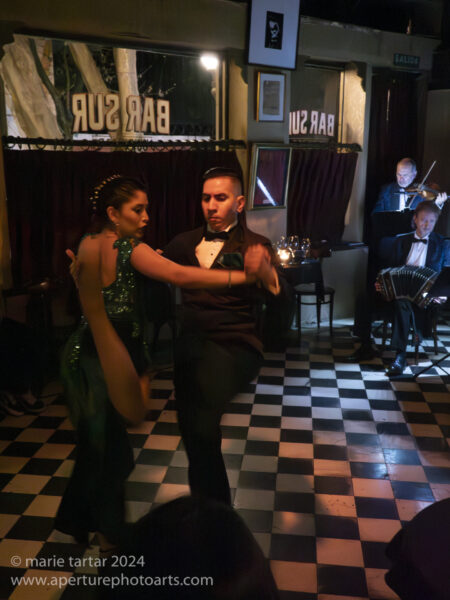
It was a move like this that twacked a patron’s table and sent a dish crashing to the floor (Bar Sur, San Telmo, Buenos Aires, Argentina).
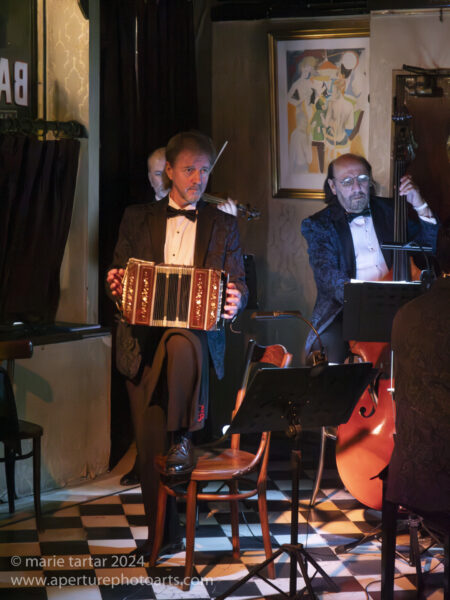
Despite the small size of the venue, Bar Sur’s tango evening featured a 4-person band (not pictured, the piano player).
Our evening with live music and swirling tango dancers at Bar Sur on our final evening in Buenos Aires was the perfect send-off to a completely different side of Argentina. I enjoyed BA more this second time around, as did Greg. Maybe it was the reassurance provided by Bernardo that we weren’t sitting ducks walking around with cameras, maybe it was the advent of Uber and a slightly more stabilized currency situation, but it was fun approaching the city in a more structured, photographic way with a knowledgable guide. We enjoyed his company and perspective, as well as not having to figure out every logistical detail.
The following day, after a leisurely morning walking around Palermo Soho (the same neighborhood we stayed in on our prior trip), we had time to stroll in the nearby botanical garden Bernardo had mentioned was worth a visit and within walking distance. Its official name is Jardín Botánico Carlos Thays de la Ciudad Autónoma de Buenos Aires and is a national monument named for its French-Argentine landscape designer. It is a verdant triangular oasis dotted with classical statuary and a peaceful refuge, despite being bounded by busy city streets. We were off to the raison d’être for this expedition, namely Península Valdés, where Adriana, Clark, Margi and Eric had just concluded a most successful week of southern right whale excursions. We could only hope the weather would hold for us!
-Marie
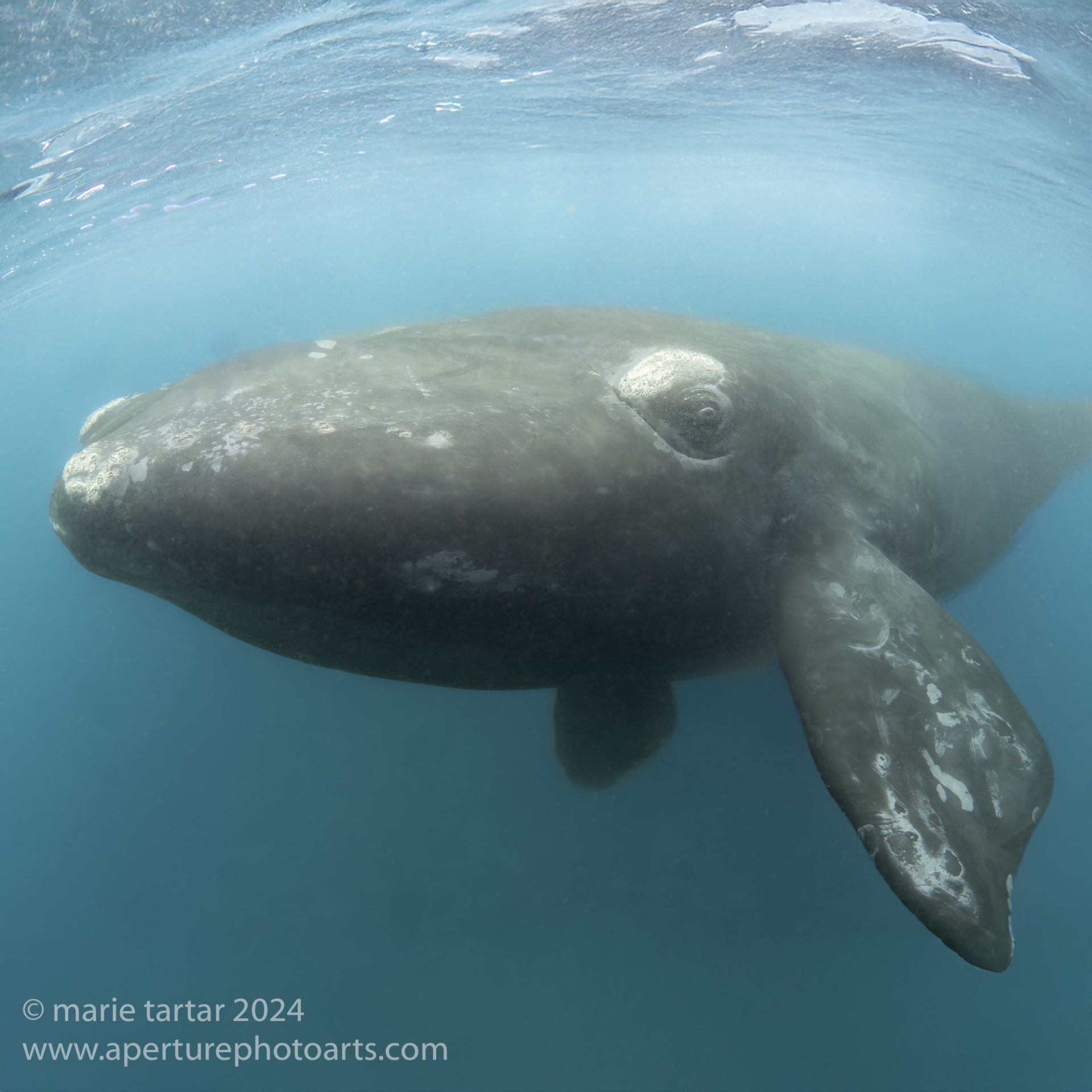
A preview of our stay in Peninsula Valdes: Adriana had said “You will see whales!” and (spoiler alert) we did and in abundance!

